
NEWS: JUNE 2014
We are asking KIND PEOPLE, SPONSORS, COMPANIES and ORGANIZATIONS for financial DONATION of our public activities on protection and conservation of the Belarusian part of the Bialowieza Forest (Belovezhskaya Pushcha). Even small-sized contributions are very welcomed because of the dramatic situation. We are also asking TRANSLATORS and other experts for help and bilateral cooperation to protect and conserve the Bialowieza Forest. We will also be VERY GRATEFUL for your technical and other assistance. Thank you in advance.
With your offers, please address to our email ![]() pushcha-XXI@tut.by. Your questions and other related information are also welcomed.
pushcha-XXI@tut.by. Your questions and other related information are also welcomed.
June 25, 2014
Website "UN Radio"
1,007 Sites are in the UNESCO World Heritage List
During the 38th session of the World Heritage Committee in Doha, 26 new Sites concluded were added to the appropriate List.
Now the World Heritage Sites' List has 1007 Sites in 161 countries. The Site of Myanmar - Ancient city of the Kingdom of Pew – got first in the List. It became the thousandth Site included in the list.
The List was also added with the Silk Road - a network of routes through Kazakhstan and Kyrgyzstan, and the Bulgarian Historical and Archaeological Site in Russia.
Experts approved the extension of four Sites already inscribed on the List, including the Bialowieza Forest in Belarus and Poland.
During the session, the authorities of Qatari have pledged to provide $ 10 million in a new fund established for the protection of World Heritage Sites, affected by conflicts or natural disasters.
The next 39th session of the World Heritage Committee will be held in Bonn from June 28 to July 8, 2015.
During the 38th session of the World Heritage Committee in Doha, 26 new Sites concluded were added to the appropriate List.
Now the World Heritage Sites' List has 1007 Sites in 161 countries. The Site of Myanmar - Ancient city of the Kingdom of Pew – got first in the List. It became the thousandth Site included in the list.
The List was also added with the Silk Road - a network of routes through Kazakhstan and Kyrgyzstan, and the Bulgarian Historical and Archaeological Site in Russia.
Experts approved the extension of four Sites already inscribed on the List, including the Bialowieza Forest in Belarus and Poland.
During the session, the authorities of Qatari have pledged to provide $ 10 million in a new fund established for the protection of World Heritage Sites, affected by conflicts or natural disasters.
The next 39th session of the World Heritage Committee will be held in Bonn from June 28 to July 8, 2015.
June 25, 2014
Website "Gazeta.kz"
26 new sites were included in the World Heritage List
 Inscribing the thousandth Site, as well as the first Site to Myanmar in the World Heritage List were the key moments of the 38th session of the World Heritage Committee. During the ten-day session to be held in Doha (Qatar), 26 new Sites were added to the World Heritage List. With the additions made, the World Heritage List has 1,007 Sites in 161 countries.
Inscribing the thousandth Site, as well as the first Site to Myanmar in the World Heritage List were the key moments of the 38th session of the World Heritage Committee. During the ten-day session to be held in Doha (Qatar), 26 new Sites were added to the World Heritage List. With the additions made, the World Heritage List has 1,007 Sites in 161 countries.
At the opening of the 38th session chaired by Sheikh Al Mayassa Bint Hamad Bin Khalifa Al Thani, the Qatar's Prime Minister Abdullah bin Nasser bin Khalifa Al Thani announced about a contribution of the amount of U.S. $ 10 million to a new fund aimed at the protection of the World Heritage Sites affected by conflicts or natural disasters.
Among other new natural Sites:
Cultural Sites: Khapak-Nyan - road system in the Andes (Argentina, Bolivia, Chile, Colombia, Ecuador, Peru), Grand Canal (China) Settlement of Leaders and Stone Balls of Tribe Dikis of the pre-Columbian period (Costa Rica), Cave Pont-d'Arc with rock paintings, known as the Cave of Chauvet-Pont d'Arc, Ardeche (France), Vestverk of the Carolingian era and Corvey Abbey (Germany), Rani-ki-Vav (Step Well "Steps Queen") in Patan, staff Gujarat (India), Shahr-Suhte (Iran), the Citadel of Erbil (Iraq), Caves Mareshah and Bet Guvrin in the Judean Valley in the as a microcosm of the Earth Caves (Israel), Landscape of vineyards of Piedmont: Langhe, Roero and Monferrato (Italy), Silk Factory Tomioka and related facilities (Japan), The Silk Road: route network Chang'an Tien Shan corridor (Kyrgyzstan, Kazakhstan and China), Ancient cities of the Kingdom of Pugh (Myanmar), Plant Nellefabrik (Netherlands), Namhansanson (Republic of Korea), Bulgarian Historical and Archaeological Complex (Russian Federation), Historic Jeddah, Makkah Gate (Saudi Arabia), Bursa and Kumalikizik - the birth of the Ottoman Empire (Turkey), Pergamon and its multifaceted cultural landscape (Turkey), monumental earthwork building Poverte Point (United States of America).
New Mixed Site - Landscape Complex Chang An (Vietnam).
During the ten-day session, the Committee included three Sites on the List of World Heritage Sites in Danger - Palestine: land of Olive Trees and Vineyards; Cultural Landscape of Southern Jerusalem, Batir (Palestine) and city of Potosi (Plurinational State of Bolivia) and Hunting Reserve Selous (Tanzania). Ruins of Kilwa-Kisiwani and Songo Mnara (United Republic of Tanzania) were excluded from the List.
In addition, the expansion of four Sites already inscribed on the List was approved - Karst in Southern China (Phase II) [Extension of "Karst in Southern China"]; Wadden Sea (Denmark and Germany) [Extension of the "Wadden Sea" (Germany / Netherlands)]; Bialowieza Forest (Belarus / Poland) [Extension of "Belovezhskaya Pushcha / Bialowieza" (Belarus / Poland)]; Ancient Maya City of Calakmul and protected tropical forests (Mexico).
39th session of the World Heritage Committee will be held in Bonn, Germany, from June 28 to July 8, 2015.

At the opening of the 38th session chaired by Sheikh Al Mayassa Bint Hamad Bin Khalifa Al Thani, the Qatar's Prime Minister Abdullah bin Nasser bin Khalifa Al Thani announced about a contribution of the amount of U.S. $ 10 million to a new fund aimed at the protection of the World Heritage Sites affected by conflicts or natural disasters.
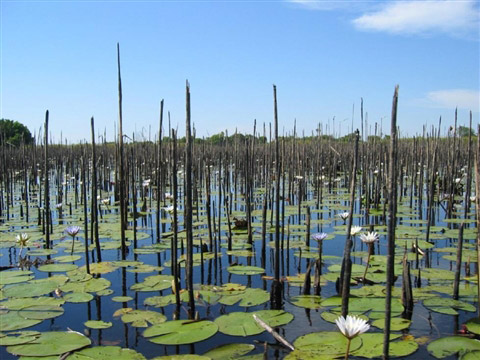 |
| Site of the Okavango Delta (Botswana) was the thousandth Site in the World Heritage List |
 |
| Stevns Klint (Denmark) |
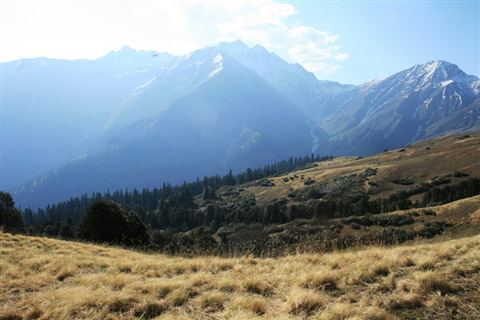 |
| Great Himalayan National Park (India) |
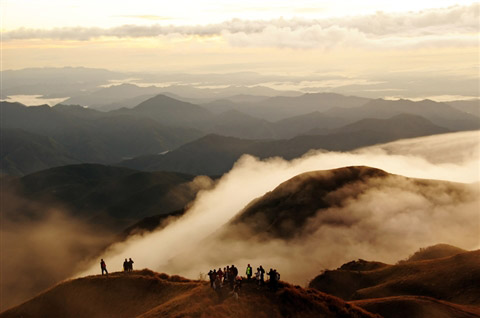 |
| Nature Reserve of the Mountains Hamiguytan (Philippines) |
New Mixed Site - Landscape Complex Chang An (Vietnam).
During the ten-day session, the Committee included three Sites on the List of World Heritage Sites in Danger - Palestine: land of Olive Trees and Vineyards; Cultural Landscape of Southern Jerusalem, Batir (Palestine) and city of Potosi (Plurinational State of Bolivia) and Hunting Reserve Selous (Tanzania). Ruins of Kilwa-Kisiwani and Songo Mnara (United Republic of Tanzania) were excluded from the List.
In addition, the expansion of four Sites already inscribed on the List was approved - Karst in Southern China (Phase II) [Extension of "Karst in Southern China"]; Wadden Sea (Denmark and Germany) [Extension of the "Wadden Sea" (Germany / Netherlands)]; Bialowieza Forest (Belarus / Poland) [Extension of "Belovezhskaya Pushcha / Bialowieza" (Belarus / Poland)]; Ancient Maya City of Calakmul and protected tropical forests (Mexico).
39th session of the World Heritage Committee will be held in Bonn, Germany, from June 28 to July 8, 2015.
June 25, 2014
Website "BelTA"
Bialowieza Forest on both sides of the border has become a single World Heritage Site
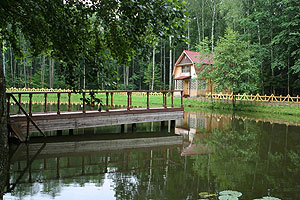
One of the tourist areas of Belovezhskaya Pushcha,
close to the lake Lyadskoe
Bialowieza Forest on both sides of the border has become a single trans-boundary UNESCO World Heritage Site, as BelTA learned from the scientific department of the National Park.
A joint application of Poland and Belarus on re-nomination of the Bialowieza forest - now as a single trans-boundary site – was approved by a decision of the World Heritage Committee at the 38th session in Doha, the Qatari capital, on June 23. The trans-boundary Site was called Bialowieza Forest, with a total area of 141,885 hectares, of which 81 hectares are in the Belarusian part.
The Committee also adopted a proposal for new nomination criteria that better reflect the exceptional value of the oldest forests in Europe. Earlier the Bialowieza Forest is on the List of World Heritage Sites by criterion VII, which implies the Site of outstanding aesthetic value. Now the natural ecosystem is nominated by more appropriate criteria - IX and X. Thus, the criterion IX corresponds to the Site, which is a unique example of the flow of essential ecological and biological processes in the evolution and development of terrestrial ecosystems and communities of plants and animals. Criterion X corresponds to the Site, which has the most important and significant habitats for conservation of biological diversity in-situ, including threatened species of outstanding universal value from the point of view of science or conservation.
The Bialowieza Forest appeared first on the List of World Heritage Sites in 1979. At that time was included a part of the Forest located on the Polish side, called Bialowieski Park Narodowy (Bialowieza National Park). In 1991, an application to include in the UNESCO List the Belarusian part of the Forest, which at that time had the status of State National Park of 87,600 hectares, was submitted. After visiting the Park, experts from UNESCO and the World Conservation Union recommended inscribing on the List the part of the core conservation area adjacent to the existing World Heritage Site on the Polish side. Then the trans-boundary World Heritage Site called Belovezhskaya Pushcha / Bialowieza Forest, which had 4,747 hectares on the Polish side and 5,250 ha in Belarus, was established by the decision of the Committee.
In 2008, on the recommendation of UNESCO experts, Belarus and Poland began work on re-nomination of the Site and proposed a new name and recognition criteria, as well as changing borders of the territory. Both sides agreed to the new recognizable worldwide name - Bialowieza Forest. The proposed boundaries of the Site include the entire ecosystem of the old-growth natural forests, and also Bog "Wild", which is located on the northeastern edge of the Forest and which is ecologically and hydrologically connected to the Bialowieza Forest.
The work was finally completed in 2013, when documentation required for consideration of re-nomination of the Site was submitted to the World Heritage Committee.
The Deputy General Director of the National Park "Belovezhskaya Pushcha" for science Vasil Arnolbik that, in the near future the employees of the scientific department together with their Polish colleagues will be engaged in the development of the Management Plan for the trans-boundary World Heritage Site in its new borders. "Administrations of the two national parks already have a steering joint committee of 12 people. We will closely cooperate and work on the outstanding universal value of the Site. I believe that all these changes will contribute to further growth in popularity of the Bialowieza Forest and will increase the tourist flow. Additionally, we will have more opportunities for environmental projects and research", Vasily Arnolbik said.
By Svetlana Vechorko

One of the tourist areas of Belovezhskaya Pushcha,
close to the lake Lyadskoe
A joint application of Poland and Belarus on re-nomination of the Bialowieza forest - now as a single trans-boundary site – was approved by a decision of the World Heritage Committee at the 38th session in Doha, the Qatari capital, on June 23. The trans-boundary Site was called Bialowieza Forest, with a total area of 141,885 hectares, of which 81 hectares are in the Belarusian part.
The Committee also adopted a proposal for new nomination criteria that better reflect the exceptional value of the oldest forests in Europe. Earlier the Bialowieza Forest is on the List of World Heritage Sites by criterion VII, which implies the Site of outstanding aesthetic value. Now the natural ecosystem is nominated by more appropriate criteria - IX and X. Thus, the criterion IX corresponds to the Site, which is a unique example of the flow of essential ecological and biological processes in the evolution and development of terrestrial ecosystems and communities of plants and animals. Criterion X corresponds to the Site, which has the most important and significant habitats for conservation of biological diversity in-situ, including threatened species of outstanding universal value from the point of view of science or conservation.
The Bialowieza Forest appeared first on the List of World Heritage Sites in 1979. At that time was included a part of the Forest located on the Polish side, called Bialowieski Park Narodowy (Bialowieza National Park). In 1991, an application to include in the UNESCO List the Belarusian part of the Forest, which at that time had the status of State National Park of 87,600 hectares, was submitted. After visiting the Park, experts from UNESCO and the World Conservation Union recommended inscribing on the List the part of the core conservation area adjacent to the existing World Heritage Site on the Polish side. Then the trans-boundary World Heritage Site called Belovezhskaya Pushcha / Bialowieza Forest, which had 4,747 hectares on the Polish side and 5,250 ha in Belarus, was established by the decision of the Committee.
In 2008, on the recommendation of UNESCO experts, Belarus and Poland began work on re-nomination of the Site and proposed a new name and recognition criteria, as well as changing borders of the territory. Both sides agreed to the new recognizable worldwide name - Bialowieza Forest. The proposed boundaries of the Site include the entire ecosystem of the old-growth natural forests, and also Bog "Wild", which is located on the northeastern edge of the Forest and which is ecologically and hydrologically connected to the Bialowieza Forest.
The work was finally completed in 2013, when documentation required for consideration of re-nomination of the Site was submitted to the World Heritage Committee.
The Deputy General Director of the National Park "Belovezhskaya Pushcha" for science Vasil Arnolbik that, in the near future the employees of the scientific department together with their Polish colleagues will be engaged in the development of the Management Plan for the trans-boundary World Heritage Site in its new borders. "Administrations of the two national parks already have a steering joint committee of 12 people. We will closely cooperate and work on the outstanding universal value of the Site. I believe that all these changes will contribute to further growth in popularity of the Bialowieza Forest and will increase the tourist flow. Additionally, we will have more opportunities for environmental projects and research", Vasily Arnolbik said.
By Svetlana Vechorko
June 24, 2014
Website "Belarusian Radio Ratsya"
The territory of the Bialowieza Forest is over 140,000 hectares
Office of the UN-UNESCO World Heritage Sites supported a Polish-Belarusian application in expanding area of the Bialowieza Forest as a World Heritage Site.
Spokesman for the Ministry of Environment Pavel Mikusek said that now the territory of the Bialowieza Forest, which is subject to specific rules for the protection and management, will consist of more than 140,000 hectares.
"In the statements for UNESCO is noted that area of the National Park has not receded, and the rules of managing the territory of the Forest have not changed."
According to the Ministry, the Office of the United Nations fully supports the earlier forms of protection and management of flora and fauna in the Forest and it will not affect the residents of the territories of the Forest. The UNESCO List has more than 200 natural sites, such as parks, nature reserves and lakes.
By Kastus Bandaruk
Office of the UN-UNESCO World Heritage Sites supported a Polish-Belarusian application in expanding area of the Bialowieza Forest as a World Heritage Site.
Spokesman for the Ministry of Environment Pavel Mikusek said that now the territory of the Bialowieza Forest, which is subject to specific rules for the protection and management, will consist of more than 140,000 hectares.
"In the statements for UNESCO is noted that area of the National Park has not receded, and the rules of managing the territory of the Forest have not changed."
According to the Ministry, the Office of the United Nations fully supports the earlier forms of protection and management of flora and fauna in the Forest and it will not affect the residents of the territories of the Forest. The UNESCO List has more than 200 natural sites, such as parks, nature reserves and lakes.
By Kastus Bandaruk
June 24, 2014
Website "RIA Novosti"
Bialowieza Forest joined a UNESCO's List of World Heritage Sites
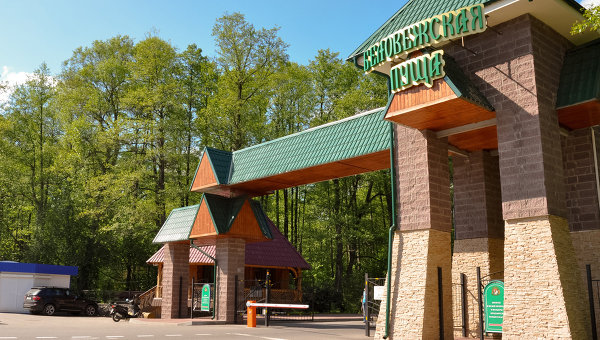
Bialowieza Forest is located on the border of Belarus and Poland and is the largest remnant of the relic primeval forest. Now the forest covers 141,885 hectares and is an exceptional site to get home for largest populations of various species of animals.
Bialowieza Forest became one of the sites which are registered in the UNESCO World Heritage List. The decision was taken at a meeting of experts of the UNESCO in Doha, Qatar, as the UNESCO information portal reports.
Bialowieza Forest is located on the border of Belarus and Poland and is the largest remnant of the relic of the primeval forest. According to scientists, a prehistoric forest was grown throughout Europe, but over time the forest was almost completely cut down.
Now the forest covers 141,885 hectares and is an exceptional site for big populations of different species, in particular, European bison.
This unique natural area also places a governmental residence, where in 1991 the heads of the Russian Federation, Belarus and Ukraine signed an agreement on the cessation of existence of the USSR.

Bialowieza Forest is located on the border of Belarus and Poland and is the largest remnant of the relic primeval forest. Now the forest covers 141,885 hectares and is an exceptional site to get home for largest populations of various species of animals.
Bialowieza Forest became one of the sites which are registered in the UNESCO World Heritage List. The decision was taken at a meeting of experts of the UNESCO in Doha, Qatar, as the UNESCO information portal reports.
Bialowieza Forest is located on the border of Belarus and Poland and is the largest remnant of the relic of the primeval forest. According to scientists, a prehistoric forest was grown throughout Europe, but over time the forest was almost completely cut down.
Now the forest covers 141,885 hectares and is an exceptional site for big populations of different species, in particular, European bison.
This unique natural area also places a governmental residence, where in 1991 the heads of the Russian Federation, Belarus and Ukraine signed an agreement on the cessation of existence of the USSR.
June 24, 2014
Website "Wild Nature"
Vasily Arnolbik denied the fact of reducing the size of Belovezhskaya Pushcha in the UNESCO World Heritage List
Today, mass media reported that the United Nations Educational, Scientific and Cultural Organization (UNESCO) excluded 5,000 hectares of the Bialowieza Forest on the Belarusian side from the World Heritage Site. Deputy Director General for science of the National Park "Belovezhskaya Pushcha" Vasily Arnolbik denied this fact.
Decision to expand the list of specially protected sites for UNESCO and change their borders was adopted at the session of the World Heritage Committee in Doha, Qatar, on 21 and 22 June. According to the results, the area of the Site "Belovezhskaya Pushcha / Bialowieza", which is important for natural and cultural heritage and which was included in the UNESCO List of World Heritage Sites in 1979, has been increased from 10,200 to 141,000 hectares and was named Bialowieza Forest. Together with the Buffer Zone, the area of the Forest is 308,583 hectares. It increased from 5,500 to 81,000 ha on the Belarusian side and from 5,000 to 60,000 ha on the Polish one.
"In a press release prepared by UNESCO, there is an error, which is based on a mistake made in earlier reports. It is pretty complicated story. In fact those territories were included, which were primarily assumed. The proposed boundaries of the Site include the entire ecosystem of the old-growth natural forests, as well as of the Bog "Wild" located on the northeastern edge of the Forest, which is ecologically and hydrologically connected to the Bialowieza Forest. Former forest areas of the forest enterprises which were part of the National Park in the 70s of the last century, were not included," Vasily Arnolbik explained.
In addition, the Committee adopted a proposal on new nomination criteria. Earlier the Bialowieza Forest was on the List of World Heritage by criteria VII, which implies the Site of outstanding aesthetic value. Now it is the Site is nominated by more appropriate criteria - IX and X. They mean as follows. Criterion IX corresponds to a Site with most important ecological and biological processes in the evolution and development of terrestrial ecosystems and communities of plants and animals. Criterion X corresponds to the Site, which has the most important and significant habitats for conservation of biological diversity in-situ, including threatened species of outstanding universal value from the point of view of science or conservation.
By Valentina Lesnova
Today, mass media reported that the United Nations Educational, Scientific and Cultural Organization (UNESCO) excluded 5,000 hectares of the Bialowieza Forest on the Belarusian side from the World Heritage Site. Deputy Director General for science of the National Park "Belovezhskaya Pushcha" Vasily Arnolbik denied this fact.
Decision to expand the list of specially protected sites for UNESCO and change their borders was adopted at the session of the World Heritage Committee in Doha, Qatar, on 21 and 22 June. According to the results, the area of the Site "Belovezhskaya Pushcha / Bialowieza", which is important for natural and cultural heritage and which was included in the UNESCO List of World Heritage Sites in 1979, has been increased from 10,200 to 141,000 hectares and was named Bialowieza Forest. Together with the Buffer Zone, the area of the Forest is 308,583 hectares. It increased from 5,500 to 81,000 ha on the Belarusian side and from 5,000 to 60,000 ha on the Polish one.
"In a press release prepared by UNESCO, there is an error, which is based on a mistake made in earlier reports. It is pretty complicated story. In fact those territories were included, which were primarily assumed. The proposed boundaries of the Site include the entire ecosystem of the old-growth natural forests, as well as of the Bog "Wild" located on the northeastern edge of the Forest, which is ecologically and hydrologically connected to the Bialowieza Forest. Former forest areas of the forest enterprises which were part of the National Park in the 70s of the last century, were not included," Vasily Arnolbik explained.
In addition, the Committee adopted a proposal on new nomination criteria. Earlier the Bialowieza Forest was on the List of World Heritage by criteria VII, which implies the Site of outstanding aesthetic value. Now it is the Site is nominated by more appropriate criteria - IX and X. They mean as follows. Criterion IX corresponds to a Site with most important ecological and biological processes in the evolution and development of terrestrial ecosystems and communities of plants and animals. Criterion X corresponds to the Site, which has the most important and significant habitats for conservation of biological diversity in-situ, including threatened species of outstanding universal value from the point of view of science or conservation.
By Valentina Lesnova
June 28, 2014
Website "The National Park "Belovezhskaya Pushcha""
Now the entire territory of the Bialowieza Forest on both sides of the border is inscribed onto a List of UNESCO World Heritage Site as a single trans-boundary site
On June 23 of 2014, the World Heritage Committee at the 38th regular session in Doha (Qatar) adopted a joint request from Belarus and Poland to make area of the Bialowieza Forest on both sides of the border as a single trans-boundary World Heritage Site by UNESCO.
Due to the decision of the Committee, the trans-boundary World Heritage Site received a common name Bialowieza Forest, and its area now amounts to 141,885 hectares on both sides of the border. The Buffer Zone of the Site is now 166,708 ha; altogether the area in 308,583 hectares.
The World Heritage Committee included the Bialowieza Forest on the Polish side in the List of World Heritage Sites in 1979. It is covered by the Bialowieza National Park. In 1991, an application for inclusion the Belarusian part of the Bialowieza Forest (Belovezhskaya Pushcha) in the World Heritage List was submitted. This part at that time had the status of State National Park with an area of 87,600 hectares. Experts from UNESCO and the International Union for Conservation of Nature after a visit to the National Park recommended a part of the conservation area of the National Park adjacent to the existing World Heritage Sites on the Polish side for inclusion in the List. Then, according to the decision of the Committee, a Trans-boundary World Heritage Site under the name "Belovezhskaya Pushcha / Bialowieza Forest", comprising 4,747 hectares on the Polish side and 5,250 ha in Belarus, was established.
In 2008, on the recommendation of UNESCO's experts, the countries that are parties to the UNESCO World Heritage Convention (Poland and Belarus) began work related to re-nomination of the Site. It was proposed a new name, the change the boundaries of the territory and its size, as well as the use of new criteria for recognition. Both parties agreed to the new name recognized around the world as "Bialowieza Forest". The proposed boundaries of the Site covered the entire forest ecosystem of old-natural forests, and also the Bog "Wild" located on the northeastern edge of the Forest and ecologically and hydrologically connected to the Bialowieza Forest.
Work on this was finally completed in 2013. Then, all the documentation required for consideration of re-nomination of the Site were submitted to the World Heritage Committee.
At the 38th session, the Committee adopted the proposal for new nomination criteria, which significantly better reflect the value of the Site. If previously the Bialowieza Forest was on the List of World Natural Heritage Sites by criteria VII, which implies possession of the Site of outstanding aesthetic value, so now the natural ecosystem is nominated for more suitable natural criteria IX and X:
Criterion ix: The Site is a unique example of the flow of essential ecological and biological processes in the evolution and development of terrestrial ecosystems and communities of plants and animals.
Criterion x: The Site includes the most important and significant natural habitats for conservation of biological diversity in-situ, including threatened species of outstanding universal value from the point of view of science or conservation.
Now, in the short term, the staff of the Scientific Department together with their Polish counterparts are going to develop the management plan for the Trans-boundary World Heritage Site within its new borders.
On June 23 of 2014, the World Heritage Committee at the 38th regular session in Doha (Qatar) adopted a joint request from Belarus and Poland to make area of the Bialowieza Forest on both sides of the border as a single trans-boundary World Heritage Site by UNESCO.
Due to the decision of the Committee, the trans-boundary World Heritage Site received a common name Bialowieza Forest, and its area now amounts to 141,885 hectares on both sides of the border. The Buffer Zone of the Site is now 166,708 ha; altogether the area in 308,583 hectares.
The World Heritage Committee included the Bialowieza Forest on the Polish side in the List of World Heritage Sites in 1979. It is covered by the Bialowieza National Park. In 1991, an application for inclusion the Belarusian part of the Bialowieza Forest (Belovezhskaya Pushcha) in the World Heritage List was submitted. This part at that time had the status of State National Park with an area of 87,600 hectares. Experts from UNESCO and the International Union for Conservation of Nature after a visit to the National Park recommended a part of the conservation area of the National Park adjacent to the existing World Heritage Sites on the Polish side for inclusion in the List. Then, according to the decision of the Committee, a Trans-boundary World Heritage Site under the name "Belovezhskaya Pushcha / Bialowieza Forest", comprising 4,747 hectares on the Polish side and 5,250 ha in Belarus, was established.
In 2008, on the recommendation of UNESCO's experts, the countries that are parties to the UNESCO World Heritage Convention (Poland and Belarus) began work related to re-nomination of the Site. It was proposed a new name, the change the boundaries of the territory and its size, as well as the use of new criteria for recognition. Both parties agreed to the new name recognized around the world as "Bialowieza Forest". The proposed boundaries of the Site covered the entire forest ecosystem of old-natural forests, and also the Bog "Wild" located on the northeastern edge of the Forest and ecologically and hydrologically connected to the Bialowieza Forest.
Work on this was finally completed in 2013. Then, all the documentation required for consideration of re-nomination of the Site were submitted to the World Heritage Committee.
At the 38th session, the Committee adopted the proposal for new nomination criteria, which significantly better reflect the value of the Site. If previously the Bialowieza Forest was on the List of World Natural Heritage Sites by criteria VII, which implies possession of the Site of outstanding aesthetic value, so now the natural ecosystem is nominated for more suitable natural criteria IX and X:
Criterion ix: The Site is a unique example of the flow of essential ecological and biological processes in the evolution and development of terrestrial ecosystems and communities of plants and animals.
Criterion x: The Site includes the most important and significant natural habitats for conservation of biological diversity in-situ, including threatened species of outstanding universal value from the point of view of science or conservation.
Now, in the short term, the staff of the Scientific Department together with their Polish counterparts are going to develop the management plan for the Trans-boundary World Heritage Site within its new borders.
 |
 |
 |
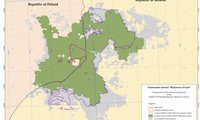 |
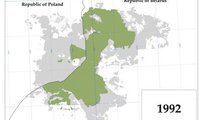 |
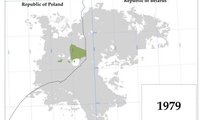 |
June 24, 2014
Website "Interfax.by"
UNESCO excluded from the World Heritage List only low-value areas of Belovezhskaya Pushcha

The United Nations Educational, Scientific and Cultural Organization (UNESCO) excluded from the World Heritage Site List only low-value areas from the trans-boundary Site "Belovezhskaya Pushcha / Bialowieza" on the Belarusian side, as the Agency "Interfax-West" learned in the administration of the National Park "Belovezhskaya Pushcha".
"Reducing the boundaries of the trans-boundary Site on the object Belarusian side by 5,000 hectares was due to exclusion the low-value forests from the World Heritage Site List that do not have historical value. These forests are 40 years or less old, while the trees in other areas are 120 to 130 and more years old", Deputy Director General for research of the National Park "Belovezhskaya Pushcha" Vasily Arnolbik informed.
He specified that "Forests planted by man and taking to the Park from nearby forestry enterprises were excluded from the UNESCO World Heritage List."
"Works on correction of the borders of the trans-boundary Site was conducted jointly by Poland and Belarus over the past two years. This should have been done because economic activities were until recently in the historic forest areas of the neighboring country. Now the protected part of the Polish section of the Bialowieza Forest is increased," the expert said.
"In general, the trans-boundary Site was increased significantly," the representative of the National Park stated.
Earlier, UNESCO reported in a press release that the change of borders of the Site "implies a reduction in its Belarusian territory for more than 5,000 hectares and a big expansion of the area (from 5,069 to 59,576 hectares) on the territory of Poland." Thus, the total area of the Bialowieza Forest on both sides is now 141,885 hectares.
Bialowieza Forest is one of the largest lowland forests in Europe, which survived in a relatively undisturbed state up to now. Its territory is divided by the state frontier into two parts - the Belarusian and Polish. The Bialowieza National Park is on the territory of the Polish part of the Forest. The State Environmental Establishment "The National Park "Belovezhskaya Pushcha" is on the Belarusian part of the forest and adjacent lands. These lands are owned by the state and are designed to protect the environment.
The site "Belovezhskaya Pushcha / Bialowieza" was inscribed on the UNESCO World Heritage List in 1979.

The United Nations Educational, Scientific and Cultural Organization (UNESCO) excluded from the World Heritage Site List only low-value areas from the trans-boundary Site "Belovezhskaya Pushcha / Bialowieza" on the Belarusian side, as the Agency "Interfax-West" learned in the administration of the National Park "Belovezhskaya Pushcha".
"Reducing the boundaries of the trans-boundary Site on the object Belarusian side by 5,000 hectares was due to exclusion the low-value forests from the World Heritage Site List that do not have historical value. These forests are 40 years or less old, while the trees in other areas are 120 to 130 and more years old", Deputy Director General for research of the National Park "Belovezhskaya Pushcha" Vasily Arnolbik informed.
He specified that "Forests planted by man and taking to the Park from nearby forestry enterprises were excluded from the UNESCO World Heritage List."
"Works on correction of the borders of the trans-boundary Site was conducted jointly by Poland and Belarus over the past two years. This should have been done because economic activities were until recently in the historic forest areas of the neighboring country. Now the protected part of the Polish section of the Bialowieza Forest is increased," the expert said.
"In general, the trans-boundary Site was increased significantly," the representative of the National Park stated.
Earlier, UNESCO reported in a press release that the change of borders of the Site "implies a reduction in its Belarusian territory for more than 5,000 hectares and a big expansion of the area (from 5,069 to 59,576 hectares) on the territory of Poland." Thus, the total area of the Bialowieza Forest on both sides is now 141,885 hectares.
Bialowieza Forest is one of the largest lowland forests in Europe, which survived in a relatively undisturbed state up to now. Its territory is divided by the state frontier into two parts - the Belarusian and Polish. The Bialowieza National Park is on the territory of the Polish part of the Forest. The State Environmental Establishment "The National Park "Belovezhskaya Pushcha" is on the Belarusian part of the forest and adjacent lands. These lands are owned by the state and are designed to protect the environment.
The site "Belovezhskaya Pushcha / Bialowieza" was inscribed on the UNESCO World Heritage List in 1979.
June 24, 2014
Website "Radio Liberty"
Deputy Director of Belovezhskaya Pushcha - UNESCO is wrong not now, but before

In Belovezhskaya Pushcha
Deputy Director of the National Park "Belovezhskaya Pushcha" for science Vasily Arnolbik explains why the area under a special protection on the Belarusian side of the Forest was reduced by 5,000 hectares:
"The World Heritage Committee erroneously included all 87,000 hectares. There are areas that have no value, because managed by forestry enterprises, but they were also included. In 2008, experts from the International Union for Conservation of Nature, who prepare information for UNESCO, visited us. They conducted a review and gave us a recommendation to re-nominate the Site that to eliminate mistakes," Arnolbik says.
"They advised us to include 75,000 hectares of old part of the Forest with another criterion. The initial criterion was "outstanding aesthetic value of the forest, a phenomenon of nature." Then the International Union for Conservation of Nature offered us to nominate Belovezhskaya Pushcha on new criteria "an exclusive site in terms of the evolution of nature in its natural state" and "a unique area in terms of biodiversity of animals and plants." In 2008, experts told us "Make a nomination to the new criteria, as Belovezhskaya Pushcha deserves much more than just be a phenomenon of nature and the beautiful forest."
ÞUNESCO has changed that part of the territory of Belovezhskaya Pushcha, which is a World Heritage Site List.
The currently approved extension reduces the Belarusian territory on 5,291 hectares, and the Polish part increases to almost 60,000 hectares.
Thus, the total area with the status of a World Heritage Site is nearly 142,000 hectares.
Vasily Arnolbik calls the fact that the Belarusian side of the protected area is reduced by nearly 5,000 hectares as the correcting past mistakes.
Mr. Arnolbik notes that in general the area of the global importance has grown "The whole old Forest with revised boundaries is now the World Heritage Site. Recognizability and image of the area, as well as opportunities for tourism development are increased."
The Polish area of the Bialowieza Forest obtained a World Heritage status in 1979, while the Belarusian on in 1991.

In Belovezhskaya Pushcha
Deputy Director of the National Park "Belovezhskaya Pushcha" for science Vasily Arnolbik explains why the area under a special protection on the Belarusian side of the Forest was reduced by 5,000 hectares:
"The World Heritage Committee erroneously included all 87,000 hectares. There are areas that have no value, because managed by forestry enterprises, but they were also included. In 2008, experts from the International Union for Conservation of Nature, who prepare information for UNESCO, visited us. They conducted a review and gave us a recommendation to re-nominate the Site that to eliminate mistakes," Arnolbik says.
"They advised us to include 75,000 hectares of old part of the Forest with another criterion. The initial criterion was "outstanding aesthetic value of the forest, a phenomenon of nature." Then the International Union for Conservation of Nature offered us to nominate Belovezhskaya Pushcha on new criteria "an exclusive site in terms of the evolution of nature in its natural state" and "a unique area in terms of biodiversity of animals and plants." In 2008, experts told us "Make a nomination to the new criteria, as Belovezhskaya Pushcha deserves much more than just be a phenomenon of nature and the beautiful forest."
ÞUNESCO has changed that part of the territory of Belovezhskaya Pushcha, which is a World Heritage Site List.
The currently approved extension reduces the Belarusian territory on 5,291 hectares, and the Polish part increases to almost 60,000 hectares.
Thus, the total area with the status of a World Heritage Site is nearly 142,000 hectares.
Vasily Arnolbik calls the fact that the Belarusian side of the protected area is reduced by nearly 5,000 hectares as the correcting past mistakes.
Mr. Arnolbik notes that in general the area of the global importance has grown "The whole old Forest with revised boundaries is now the World Heritage Site. Recognizability and image of the area, as well as opportunities for tourism development are increased."
The Polish area of the Bialowieza Forest obtained a World Heritage status in 1979, while the Belarusian on in 1991.
June 25, 2014
Website "The National Park "Belovezhskaya Pushcha""
Participants of the 46th session of the Parliamentary Assembly of the Union of Belarus and Russia visited Belovezhskaya Pushcha
On 21 and 22 June 2014, in Brest, the 46th session of the Parliamentary Assembly of the Union of Belarus and Russia took place. The session was attended by members of the Parliamentary Assembly, as well as representatives of the Union State Permanent Committee, ministries and departments of the Republic of Belarus and the Russian Federation.
During the meeting, the session discussed a number of issues, including the progress in implementation of the Union State, devoted to the 70th anniversary of the liberation of Belarus from Nazi invaders and the 70th anniversary of Victory in Great Patriotic War.
After a night of activities in the Memorial Complex "Brest Fortress" under the National Day of Remembrance of the Victims of World War II, participants of the 46th session of the Parliamentary Assembly of the Union of Belarus and Russia came to Belovezhskaya Pushcha, where they visited a wonderful Museum of Nature and enclosures with wild animals, and joined a sightseeing tour across the Pushcha and in the Santa Claus's Residance. Dinner was organized for the participants of the delegation at Imperial Glade in Belovezhskaya Pushcha.
On 21 and 22 June 2014, in Brest, the 46th session of the Parliamentary Assembly of the Union of Belarus and Russia took place. The session was attended by members of the Parliamentary Assembly, as well as representatives of the Union State Permanent Committee, ministries and departments of the Republic of Belarus and the Russian Federation.
During the meeting, the session discussed a number of issues, including the progress in implementation of the Union State, devoted to the 70th anniversary of the liberation of Belarus from Nazi invaders and the 70th anniversary of Victory in Great Patriotic War.
After a night of activities in the Memorial Complex "Brest Fortress" under the National Day of Remembrance of the Victims of World War II, participants of the 46th session of the Parliamentary Assembly of the Union of Belarus and Russia came to Belovezhskaya Pushcha, where they visited a wonderful Museum of Nature and enclosures with wild animals, and joined a sightseeing tour across the Pushcha and in the Santa Claus's Residance. Dinner was organized for the participants of the delegation at Imperial Glade in Belovezhskaya Pushcha.
June 23, 2014
Website "Radio Liberty"
Environmentalist about the UNESCO's decision on Belovezhskaya Pushcha - this is a mistake and math does not add up
The UNESCO website posted a message that the territory of the protected area of Belovezhskaya Pushcha decreased on the Belarusian side and increased on the Polish one.

Map of the Bialowieza Forest
The UNESCO report says that the territory of the strictly protected area is reduced by 5,000 hectares on the side of Belarus and increases from 5,069 to 59,576 hectares in Poland. The total area of the core protected zone, according to UNESCO, is now 141,885 hectares.
Heorhi Kazulka, ecologist and expert of the FSC International Program, denies such allegations.
Kazulka: "I am in despair. It's ether the reference group made a mistake on the UNESCO website, or our English is not so good and we do not understand something.
Poland increases its core protected area from 5 to 60 thousand hectares. More says that, according to UNESCO, the total area will now be 140,000 hectares.
According to the Deputy Director for Science of the National Park "Belovezhskaya Pushcha" Vasily Arnolbik, our territory increases from 5 thousand hectares to 80 thousand hectares.
60 + 80 = just turns 140 thousand.
Maybe this is the another meaning of the message - the status of our 5 thousand hectares is liquidated and all part of the protected forest on the Belarusian side of an area of 80 thousand hectares is becoming a World Heritage Site?
Previously, we had nearly 5,000 hectares. If 5,000 are liquidated and only 500 hectares remains, the question is raised - where is a total area of 140,000 hectares from? Mathematics does not fit.
Another option is if our part of 5,000 hectares is liquidated, so Belovezhskaya Pushcha ceases to be a trans-boundary subject.
So I think that there must be some mistake here."
UNESCO representatives are yet unavailable for comment.
The UNESCO website posted a message that the territory of the protected area of Belovezhskaya Pushcha decreased on the Belarusian side and increased on the Polish one.

Map of the Bialowieza Forest
The UNESCO report says that the territory of the strictly protected area is reduced by 5,000 hectares on the side of Belarus and increases from 5,069 to 59,576 hectares in Poland. The total area of the core protected zone, according to UNESCO, is now 141,885 hectares.
Heorhi Kazulka, ecologist and expert of the FSC International Program, denies such allegations.
Kazulka: "I am in despair. It's ether the reference group made a mistake on the UNESCO website, or our English is not so good and we do not understand something.
Poland increases its core protected area from 5 to 60 thousand hectares. More says that, according to UNESCO, the total area will now be 140,000 hectares.
According to the Deputy Director for Science of the National Park "Belovezhskaya Pushcha" Vasily Arnolbik, our territory increases from 5 thousand hectares to 80 thousand hectares.
60 + 80 = just turns 140 thousand.
Maybe this is the another meaning of the message - the status of our 5 thousand hectares is liquidated and all part of the protected forest on the Belarusian side of an area of 80 thousand hectares is becoming a World Heritage Site?
Previously, we had nearly 5,000 hectares. If 5,000 are liquidated and only 500 hectares remains, the question is raised - where is a total area of 140,000 hectares from? Mathematics does not fit.
Another option is if our part of 5,000 hectares is liquidated, so Belovezhskaya Pushcha ceases to be a trans-boundary subject.
So I think that there must be some mistake here."
UNESCO representatives are yet unavailable for comment.
June 23, 2014
Website "Belport.by"
UNESCO cut boundaries of the Belarusian part of Belovezhskaya Pushcha as a World Heritage Site

The World Heritage Committee approved a change in the boundaries of cross-border site in Belarus and Poland due to the decrease in the Belarusian part and increase in the Polish part.
"Changing the boundaries of the Site implies a reduction in its territory in the Belarusian part for more than 5,000 hectares and a big-scale expansion of the area (from 5,069 to 59,576 hectares) in the territory of Poland", as said in a UNESCO's press release, which text was distributed by the Agency "Interfax-West".
"Thus, the total area of the cross-border Site is now 141,885 hectares," as the document says.
The Site "Belovezhskaya Pushcha / Bialowieza" was included in the World Heritage List in 1979. Situated on the watershed of the Baltic and Black Seas, this vast primeval forest consists of both coniferous and deciduous woods. Bialowieza Forest is of great value in terms of biodiversity conservation. Its territory kames home to the largest population of the European bison, which is considered a symbol of the Bialowieza Forest.
Interfax.by

The World Heritage Committee approved a change in the boundaries of cross-border site in Belarus and Poland due to the decrease in the Belarusian part and increase in the Polish part.
"Changing the boundaries of the Site implies a reduction in its territory in the Belarusian part for more than 5,000 hectares and a big-scale expansion of the area (from 5,069 to 59,576 hectares) in the territory of Poland", as said in a UNESCO's press release, which text was distributed by the Agency "Interfax-West".
"Thus, the total area of the cross-border Site is now 141,885 hectares," as the document says.
The Site "Belovezhskaya Pushcha / Bialowieza" was included in the World Heritage List in 1979. Situated on the watershed of the Baltic and Black Seas, this vast primeval forest consists of both coniferous and deciduous woods. Bialowieza Forest is of great value in terms of biodiversity conservation. Its territory kames home to the largest population of the European bison, which is considered a symbol of the Bialowieza Forest.
Interfax.by
June 23, 2014
Website "Radio Liberty"
UNESCO reduced the protected area of Belovezhskaya Pushcha in Belarus

The area of Belovezhskaya Pushcha as a monument inscribed on a UNESCO's List of World Heritage Sites has been changed. The protected area has been reduced on the Belarusian side and increased on the Polish one. The Polish area of the Bialowieza Forest obtained the UNESCO status in 1979 and the Belarusian one in 1991.
Now the protected area of Belovezhskaya Pushcha is reduced by more than 5,000 hectares on the Belarusian side and increases from 5,069 to 59,576 hectares in Poland. The total area, according to UNESCO, makes now 141,885 hectares.
This decision was made today at the 38th session of the World Heritage Committee in the Qatari capital, Doha city.

The area of Belovezhskaya Pushcha as a monument inscribed on a UNESCO's List of World Heritage Sites has been changed. The protected area has been reduced on the Belarusian side and increased on the Polish one. The Polish area of the Bialowieza Forest obtained the UNESCO status in 1979 and the Belarusian one in 1991.
Now the protected area of Belovezhskaya Pushcha is reduced by more than 5,000 hectares on the Belarusian side and increases from 5,069 to 59,576 hectares in Poland. The total area, according to UNESCO, makes now 141,885 hectares.
This decision was made today at the 38th session of the World Heritage Committee in the Qatari capital, Doha city.
June 23, 2014
Website "Unia Europejska"
Strategic exercises "Program of Development of Tourism Products of the Polish-Belarusian Borderland"
The strategic exercises organized by Hajnowka Urban Commune within the project "Integrated Project of Support of the Tourism Sector of the Polish and Belarusian borderland" was held from 27 to 29 March of 2014 in Hajnowka and from 24 to 26 April of 2014 in Belarus. The exercise was designed to perform work on the guidelines for the "Program of Development of Tourism Products of the Polish-Belarusian Borderland". The group included representatives of the tourism industry and local authorities from Belarus and Poland.
The program included an inventory of the existing tourism potential of the Polish and Belarusian parts of Belovezhskaya Pushcha, the identification of potential tourism products, the needs of travelers and the possibility to serve them through various forms of tourism and travel services, the assessment of market opportunities of the selected tourism products, discussions of the visual identification and communication system on the market of tourism products.
Education also includes the study tours, which allowed participants to become better acquainted with the tourism products previously available on the market on the Polish-Belarusian border. Visiting Belarus, we stayed in the tourist sites, such as the "White Tower" in Kamenetz town, the Church of St. Simon Stolpnik in Kamenetz town, Holy Trinity Church in Volchin village, the Historical Landscape Park around the Sapieha & Potocki'S Palace in the Vysokoe town, the palace and park in Gremyachiy village, the fabulous residence of Father Frost on the territory of the State National Park "Belovezhskaya Pushcha".
In the Polish part of the Bialowieza Forest, participants learned about the sights located in Hajnowka town – the Museum of Blacksmithing and Bench Work, the Museum and the Center of Belarusian Culture, the Church of St. Cyril and Methodius, the water park and the NGR Skansen Park. We also visited the Natural History Museum of Forestry at the Bialowieza National Park and the hotel in Bialowieza village.
By Monika Aleksejuk
Economic Policy Department, the Board of the Hajnowka town (Poland)


The strategic exercises organized by Hajnowka Urban Commune within the project "Integrated Project of Support of the Tourism Sector of the Polish and Belarusian borderland" was held from 27 to 29 March of 2014 in Hajnowka and from 24 to 26 April of 2014 in Belarus. The exercise was designed to perform work on the guidelines for the "Program of Development of Tourism Products of the Polish-Belarusian Borderland". The group included representatives of the tourism industry and local authorities from Belarus and Poland.
The program included an inventory of the existing tourism potential of the Polish and Belarusian parts of Belovezhskaya Pushcha, the identification of potential tourism products, the needs of travelers and the possibility to serve them through various forms of tourism and travel services, the assessment of market opportunities of the selected tourism products, discussions of the visual identification and communication system on the market of tourism products.
Education also includes the study tours, which allowed participants to become better acquainted with the tourism products previously available on the market on the Polish-Belarusian border. Visiting Belarus, we stayed in the tourist sites, such as the "White Tower" in Kamenetz town, the Church of St. Simon Stolpnik in Kamenetz town, Holy Trinity Church in Volchin village, the Historical Landscape Park around the Sapieha & Potocki'S Palace in the Vysokoe town, the palace and park in Gremyachiy village, the fabulous residence of Father Frost on the territory of the State National Park "Belovezhskaya Pushcha".
In the Polish part of the Bialowieza Forest, participants learned about the sights located in Hajnowka town – the Museum of Blacksmithing and Bench Work, the Museum and the Center of Belarusian Culture, the Church of St. Cyril and Methodius, the water park and the NGR Skansen Park. We also visited the Natural History Museum of Forestry at the Bialowieza National Park and the hotel in Bialowieza village.
By Monika Aleksejuk
Economic Policy Department, the Board of the Hajnowka town (Poland)


23June , 2014
Website "The National Park "Belovezhskaya Pushcha""
Results of the competition for the best design and improvement of recreational facilities in forestry areas of Belovezhskaya Pushcha
Results of the contest for the best design and landscaping destinations of recreation sites in forestry areas of Belovezhskaya Pushcha was held in April and May of 2014. The contest was attended by 17 forestry offices of the National Park. First place was awarded to Novoselkovskoye forestry area led by forester V.Yakuta for the resting place at the eco-trail "Voytov Bridge". Second and third places were taken by Shereshevskoye (forester S.Sydorovych) and Svislochskoe (forester N.Baran) forestry areas. Cash bonuses of 10 basic units for I place, 7 base units for II and 5 ones for the III place will be paid to forestry teams.
New recreational facilities were created from natural materials. Their appearance is in harmony with nature. They will make your stay in the National Park more enjoyable and comfortable. They are located at the hiking trails, near roads or close to forestry offices, where there are cozy guest rooms.
In total, 11 ecological paths are to provide ecological tours in the Park. More than 50 recreational sites to have rest are for visitors. 115 billboards have information in an accessible form about the flora and fauna of the National Park "Belovezhskaya Pushcha".
Results of the contest for the best design and landscaping destinations of recreation sites in forestry areas of Belovezhskaya Pushcha was held in April and May of 2014. The contest was attended by 17 forestry offices of the National Park. First place was awarded to Novoselkovskoye forestry area led by forester V.Yakuta for the resting place at the eco-trail "Voytov Bridge". Second and third places were taken by Shereshevskoye (forester S.Sydorovych) and Svislochskoe (forester N.Baran) forestry areas. Cash bonuses of 10 basic units for I place, 7 base units for II and 5 ones for the III place will be paid to forestry teams.
New recreational facilities were created from natural materials. Their appearance is in harmony with nature. They will make your stay in the National Park more enjoyable and comfortable. They are located at the hiking trails, near roads or close to forestry offices, where there are cozy guest rooms.
In total, 11 ecological paths are to provide ecological tours in the Park. More than 50 recreational sites to have rest are for visitors. 115 billboards have information in an accessible form about the flora and fauna of the National Park "Belovezhskaya Pushcha".
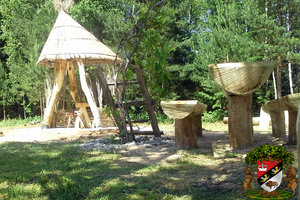 |
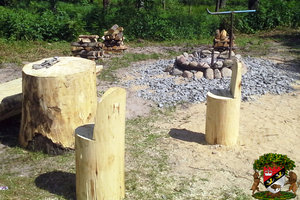 |
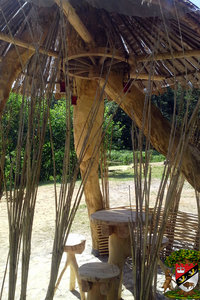 |
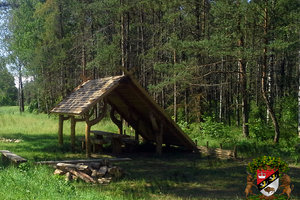 |
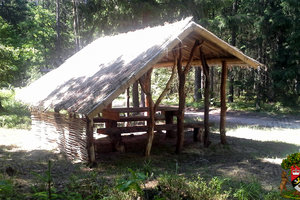 |
23June , 2014
Website "UNESCO World Heritage Centre"
Six new sites inscribed on World Heritage List

Doha, 23 June – The World Heritage Committee this morning inscribed properties in the Russian Federation, Costa Rica, Viet Nam, India, Philippines and Denmark on the World Heritage List. It also approved the extensions of a site in China and two transboundary sites in Poland and Belarus, and Denmark and Germany.
The sites discussed include two cultural sites, a mixed natural and cultural property, and six natural sites. They are:
Bolgar Historical and Archaeological Complex (Russian Federation). This property lies on the shores of the Volga River, south of its confluence with the River Kama, and south of the capital of Tatarstan, Kazan. It contains evidence of the medieval city of Bolgar, an early settlement of the civilization of Volga-Bolgars, which existed between the 7th and the 15th centuries, and was the first capital of the Golden Horde in the 13th century. Bolgar represents the historical cultural exchanges and transformations of Eurasia over several centuries that played a pivotal role in the formation of civilizations, customs and cultural traditions. The property provides remarkable evidence of historic continuity and cultural diversity. It is a symbolic reminder of the acceptance of Islam by the Volga-Bolgars in 922 AD and remains a sacred, pilgrimage destination to the Tatar Muslims.
Precolumbian Chiefdom Settlements with Stone Spheres of the Diquis (Costa Rica) includes four archaeological sites located in the Diquis Delta in southern Costa Rica, which are considered unique examples of the complex social, economic and political systems of the period between 500-1500 AD. They contain artificial mounds, paved areas, burial sites and, most significantly, a collection of stone spheres, between 0.7m and 2.57m in diameter, whose meaning, use and production remain largely a mystery. The spheres are distinctive for their perfection, their number, size and density, and their placement in their original locations. Their preservation from the looting that befell the vast majority of archeological sites in Costa Rica has been attributed to the thick layers of sediment that kept them buried for centuries.
Trang An Scenic Landscape Complex (Viet Nam) is inscribed as a mixed natural and cultural property. Situated on the southern shore of the Red River delta, Trang An is a spectacular landscape of limestone karst peaks permeated with valleys, some of which are submerged, and surrounded by steep, almost vertical cliffs. Exploration of some of the highest altitude caves that are dotted across the landscape has revealed archaeological traces of human activity dating back almost 30 000 years. They illustrate the occupation of these mountains by hunter-gatherers and how they adapted to climatic and environmental changes. The property also includes Hoa Lu, the old capital of Viet Nam in the 10th and 11th centuries, as well as temples, pagodas, paddy-field landscapes, with villages and sacred sites.
Great Himalayan National Park (India) (GHNPCA) is located in the western part of the Himalayan Mountains in the northern Indian State of Himachal Pradesh and is characterized by high alpine peaks, alpine meadows and riverine forests. The 90,540 ha property includes the upper mountain glacial and snow melt water source origins of several rivers, and the catchments of water supplies that are vital to millions of downstream users. The GHNPCA protects the monsoon-affected forests and alpine meadows of the Himalayan front ranges. It is part of the Himalaya biodiversity hotspot and includes 25 forest types along with a rich assemblage of fauna species, several of which are threatened. This gives the site outstanding significance for biodiversity conservation.
Mount Hamiguitan Range Wildlife Sanctuary (Philippines). Forming a north-south running mountain ridge along the Pujada Peninsula in the southeastern part of the Eastern Mindanao Biodiversity Corridor, the Mount Hamiguitan Range Wildlife Sanctuary has an elevation range of 75-1,637 m above sea level, and provides critical habitat for a range of plant and animal species. The property showcases terrestrial and aquatic habitats at different elevations, and includes threatened and endemic flora and fauna species, eight of which are found only at Mount Hamiguitan. These include critically endangered trees, plants and the iconic Philippine Eagle and Philippine Cockatoo.
Stevns Klint (Denmark). This geological site comprises a 15 km-long fossil-rich coastal cliff, offering exceptional evidence of the impact of the Chicxulub meteorite that crashed into the planet at the end of the Cretaceous, about 65 millions years ago. Researchers think that this caused the most remarkable mass extinction ever, responsible for the disappearance of over 50% of all life on Earth. The site harbours a record of the cloud of ash formed by the impact of the meteorite – the exact site of the impact being at the bottom of the ocean off the coast of Mexico’s Yucatan peninsula. An exceptional fossil record is visible at the site, showing the complete succession of fauna and micro-fauna charting the recovery after the mass extinction.
South China Karst (China). This is an extension of the South China Karst site. The property was inscribed on the World Heritage List in 2007 and is one of the world’s most spectacular examples of humid tropical to subtropical karst landscapes. The extension covers an area of almost 50 000 hectares. This serial site now includes 12 elements spread over the provinces of Guizhou, Guangxi, Yunnan and Chongqing and covering 176 228 hectares. It contains the most significant types of karst landforms, including tower karst, pinnacle karst and cone karst formations, along with other spectacular characteristics such as natural bridges, gorges and large cave systems.
Bialowieza Forest (Belarus/Poland). This is an extension of and new proposal for the Belovezhskaya Pushcha / Bialowieza transboudary site on the border between Poland and Belarus, inscribed on the World Heritage List in 1979. Situated on the watershed of the Baltic Sea and Black Sea, this immense range of primary forest includes both conifers and broadleaved trees. The modification to the property translates as a reduction of over 5000 hectares on the Belarus side and a vast extension of the Polish section, from 5069 to 59,576 hectares. Covering a total area of 141,885 hectares, this transboundary property is exceptional for the opportunities it offers for biodiversity conservation. It is home to the largest population of the property’s iconic species, the European bison.
The Wadden Sea (Germany/Denmark). This is an extension of the Dutch and German Wadden Sea site, inscribed on the World Heritage List in 2009. The Wadden Sea is the largest unbroken system of intertidal sand and mud flats in the world. The complete extension now covers most of the Danish Wadden Sea maritime conservation area, as well as a maritime extension of the Dutch Wadden Sea Conservation Area and the German Wadden Sea National Parks of Lower Saxony and Schleswig-Holstein.
 This morning’s inscriptions bring the total number of sites on the World Heritage List to 1007.
This morning’s inscriptions bring the total number of sites on the World Heritage List to 1007.
The 38th session of the World Heritage Committee, chaired by Sheikha Al Mayassa Bint Hamad Bin Khalifa Al Thani, began on 15 June and will continue through to 25 June.

Doha, 23 June – The World Heritage Committee this morning inscribed properties in the Russian Federation, Costa Rica, Viet Nam, India, Philippines and Denmark on the World Heritage List. It also approved the extensions of a site in China and two transboundary sites in Poland and Belarus, and Denmark and Germany.
The sites discussed include two cultural sites, a mixed natural and cultural property, and six natural sites. They are:
Bolgar Historical and Archaeological Complex (Russian Federation). This property lies on the shores of the Volga River, south of its confluence with the River Kama, and south of the capital of Tatarstan, Kazan. It contains evidence of the medieval city of Bolgar, an early settlement of the civilization of Volga-Bolgars, which existed between the 7th and the 15th centuries, and was the first capital of the Golden Horde in the 13th century. Bolgar represents the historical cultural exchanges and transformations of Eurasia over several centuries that played a pivotal role in the formation of civilizations, customs and cultural traditions. The property provides remarkable evidence of historic continuity and cultural diversity. It is a symbolic reminder of the acceptance of Islam by the Volga-Bolgars in 922 AD and remains a sacred, pilgrimage destination to the Tatar Muslims.
Precolumbian Chiefdom Settlements with Stone Spheres of the Diquis (Costa Rica) includes four archaeological sites located in the Diquis Delta in southern Costa Rica, which are considered unique examples of the complex social, economic and political systems of the period between 500-1500 AD. They contain artificial mounds, paved areas, burial sites and, most significantly, a collection of stone spheres, between 0.7m and 2.57m in diameter, whose meaning, use and production remain largely a mystery. The spheres are distinctive for their perfection, their number, size and density, and their placement in their original locations. Their preservation from the looting that befell the vast majority of archeological sites in Costa Rica has been attributed to the thick layers of sediment that kept them buried for centuries.
Trang An Scenic Landscape Complex (Viet Nam) is inscribed as a mixed natural and cultural property. Situated on the southern shore of the Red River delta, Trang An is a spectacular landscape of limestone karst peaks permeated with valleys, some of which are submerged, and surrounded by steep, almost vertical cliffs. Exploration of some of the highest altitude caves that are dotted across the landscape has revealed archaeological traces of human activity dating back almost 30 000 years. They illustrate the occupation of these mountains by hunter-gatherers and how they adapted to climatic and environmental changes. The property also includes Hoa Lu, the old capital of Viet Nam in the 10th and 11th centuries, as well as temples, pagodas, paddy-field landscapes, with villages and sacred sites.
Great Himalayan National Park (India) (GHNPCA) is located in the western part of the Himalayan Mountains in the northern Indian State of Himachal Pradesh and is characterized by high alpine peaks, alpine meadows and riverine forests. The 90,540 ha property includes the upper mountain glacial and snow melt water source origins of several rivers, and the catchments of water supplies that are vital to millions of downstream users. The GHNPCA protects the monsoon-affected forests and alpine meadows of the Himalayan front ranges. It is part of the Himalaya biodiversity hotspot and includes 25 forest types along with a rich assemblage of fauna species, several of which are threatened. This gives the site outstanding significance for biodiversity conservation.
Mount Hamiguitan Range Wildlife Sanctuary (Philippines). Forming a north-south running mountain ridge along the Pujada Peninsula in the southeastern part of the Eastern Mindanao Biodiversity Corridor, the Mount Hamiguitan Range Wildlife Sanctuary has an elevation range of 75-1,637 m above sea level, and provides critical habitat for a range of plant and animal species. The property showcases terrestrial and aquatic habitats at different elevations, and includes threatened and endemic flora and fauna species, eight of which are found only at Mount Hamiguitan. These include critically endangered trees, plants and the iconic Philippine Eagle and Philippine Cockatoo.
Stevns Klint (Denmark). This geological site comprises a 15 km-long fossil-rich coastal cliff, offering exceptional evidence of the impact of the Chicxulub meteorite that crashed into the planet at the end of the Cretaceous, about 65 millions years ago. Researchers think that this caused the most remarkable mass extinction ever, responsible for the disappearance of over 50% of all life on Earth. The site harbours a record of the cloud of ash formed by the impact of the meteorite – the exact site of the impact being at the bottom of the ocean off the coast of Mexico’s Yucatan peninsula. An exceptional fossil record is visible at the site, showing the complete succession of fauna and micro-fauna charting the recovery after the mass extinction.
South China Karst (China). This is an extension of the South China Karst site. The property was inscribed on the World Heritage List in 2007 and is one of the world’s most spectacular examples of humid tropical to subtropical karst landscapes. The extension covers an area of almost 50 000 hectares. This serial site now includes 12 elements spread over the provinces of Guizhou, Guangxi, Yunnan and Chongqing and covering 176 228 hectares. It contains the most significant types of karst landforms, including tower karst, pinnacle karst and cone karst formations, along with other spectacular characteristics such as natural bridges, gorges and large cave systems.
Bialowieza Forest (Belarus/Poland). This is an extension of and new proposal for the Belovezhskaya Pushcha / Bialowieza transboudary site on the border between Poland and Belarus, inscribed on the World Heritage List in 1979. Situated on the watershed of the Baltic Sea and Black Sea, this immense range of primary forest includes both conifers and broadleaved trees. The modification to the property translates as a reduction of over 5000 hectares on the Belarus side and a vast extension of the Polish section, from 5069 to 59,576 hectares. Covering a total area of 141,885 hectares, this transboundary property is exceptional for the opportunities it offers for biodiversity conservation. It is home to the largest population of the property’s iconic species, the European bison.
The Wadden Sea (Germany/Denmark). This is an extension of the Dutch and German Wadden Sea site, inscribed on the World Heritage List in 2009. The Wadden Sea is the largest unbroken system of intertidal sand and mud flats in the world. The complete extension now covers most of the Danish Wadden Sea maritime conservation area, as well as a maritime extension of the Dutch Wadden Sea Conservation Area and the German Wadden Sea National Parks of Lower Saxony and Schleswig-Holstein.

The 38th session of the World Heritage Committee, chaired by Sheikha Al Mayassa Bint Hamad Bin Khalifa Al Thani, began on 15 June and will continue through to 25 June.
June 23, 2014
Website "Zalessie.by"
Youth from the camp at the "Wild Bog" counted 89 species of birds!
A camp for children and youth "Summer on the Wild Bog" was held in Belovezhskaya Pushcha on the basis of agro-eco-farm "Zalesse" on 13 to 16 June. The camp was held in the framework of the USAID Project "Local Entrepreneurship and Economic Development", implemented by UNDP. Hosts of agro-eco-farm "Zalesse" with support of the National Park "Belovezhskaya Pushcha" was engaged in its management and implementation. The Brest regional branch of the Public Organization "APB-Birdlife Belarus" served the event as an information partner.
Name of the camp, "Summer on the Wild Bog", is associated with a unique natural area - Wild Bog, which is the object of recreation and research. Despite the rainy weather, the campers observed 89 species of birds. The list includes not only common and well known species. Camp participants were able to watch such globally threatened birds like spotted eagle and aquatic warbler – to see them is the real success. In addition, a rare dragonfly Nehalennia speciosa was marked and photographed for the first time in the Belarusian part of the Bialowieza Forest on the Bog "Wild".
Most inquisitive and active participants got up at 5 or 6 in the morning to watch the singing birds at the peak of their activity, and went to bed after midnight. Young naturalists were not afraid of daunting prospect to get wet during the tour through the bog, or of walking a few kilometers in the surrounding forests.
Among other things, the purpose of the camp was to show young people that the observation of nature and its active protection (for example, building houses for nesting owls and titmice - at least a dozen were made) is not only a chore, but more fun and interesting. It to estimate the mood of participants and their desire to return again and again to Zalesye, it was concluded that the assigned objectives of the camp were achieved.
A camp for children and youth "Summer on the Wild Bog" was held in Belovezhskaya Pushcha on the basis of agro-eco-farm "Zalesse" on 13 to 16 June. The camp was held in the framework of the USAID Project "Local Entrepreneurship and Economic Development", implemented by UNDP. Hosts of agro-eco-farm "Zalesse" with support of the National Park "Belovezhskaya Pushcha" was engaged in its management and implementation. The Brest regional branch of the Public Organization "APB-Birdlife Belarus" served the event as an information partner.
Name of the camp, "Summer on the Wild Bog", is associated with a unique natural area - Wild Bog, which is the object of recreation and research. Despite the rainy weather, the campers observed 89 species of birds. The list includes not only common and well known species. Camp participants were able to watch such globally threatened birds like spotted eagle and aquatic warbler – to see them is the real success. In addition, a rare dragonfly Nehalennia speciosa was marked and photographed for the first time in the Belarusian part of the Bialowieza Forest on the Bog "Wild".
Most inquisitive and active participants got up at 5 or 6 in the morning to watch the singing birds at the peak of their activity, and went to bed after midnight. Young naturalists were not afraid of daunting prospect to get wet during the tour through the bog, or of walking a few kilometers in the surrounding forests.
Among other things, the purpose of the camp was to show young people that the observation of nature and its active protection (for example, building houses for nesting owls and titmice - at least a dozen were made) is not only a chore, but more fun and interesting. It to estimate the mood of participants and their desire to return again and again to Zalesye, it was concluded that the assigned objectives of the camp were achieved.
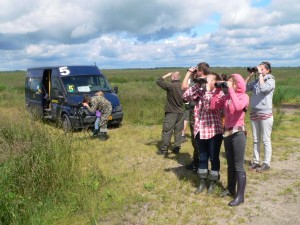 |
 |
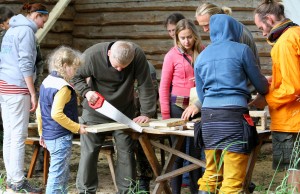 |
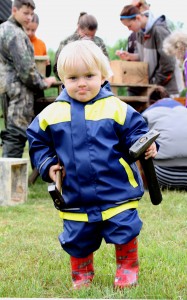 |
June 20, 2014
Website "The National Park "Belovezhskaya Pushcha""
Results of the summer camp "Summer on the Wild Bog"
A camp for children and youth "Summer on the Wild Bog" was held in Belovezhskaya Pushcha on the basis of agro-eco-farm "Zalesse" on 13 to 16 June. The camp was held in the framework of the USAID Project "Local Entrepreneurship and Economic Development", implemented by UNDP. Hosts of agro-eco-farm "Zalesse" with support of the National Park "Belovezhskaya Pushcha" was engaged in its management and implementation. The Brest regional branch of the Public Organization "APB-Birdlife Belarus" served the event as an information partner.
Name of the camp, "Summer on the Wild Bog", is associated with a unique natural area - Wild Bog, which is the object of recreation and research. Despite the rainy weather, the campers observed 89 species of birds. The list includes not only common and well known species. Camp participants were able to watch such globally threatened birds like spotted eagle and aquatic warbler – to see them is the real success. In addition, a rare dragonfly Nehalennia speciosa was marked and photographed for the first time in the Belarusian part of the Bialowieza Forest on the Bog "Wild".
Most inquisitive and active participants got up at 5 or 6 in the morning to watch the singing birds at the peak of their activity, and went to bed after midnight. Young naturalists were not afraid of daunting prospect to get wet during the tour through the bog, or of walking a few kilometers in the surrounding forests.
Among other things, the purpose of the camp was to show young people that the observation of nature and its active protection (for example, building houses for nesting owls and titmice - at least a dozen were made) is not only a chore, but more fun and interesting. It to estimate the mood of participants and their desire to return again and again to Zalesye, it was concluded that the assigned objectives of the camp were achieved.
A camp for children and youth "Summer on the Wild Bog" was held in Belovezhskaya Pushcha on the basis of agro-eco-farm "Zalesse" on 13 to 16 June. The camp was held in the framework of the USAID Project "Local Entrepreneurship and Economic Development", implemented by UNDP. Hosts of agro-eco-farm "Zalesse" with support of the National Park "Belovezhskaya Pushcha" was engaged in its management and implementation. The Brest regional branch of the Public Organization "APB-Birdlife Belarus" served the event as an information partner.
Name of the camp, "Summer on the Wild Bog", is associated with a unique natural area - Wild Bog, which is the object of recreation and research. Despite the rainy weather, the campers observed 89 species of birds. The list includes not only common and well known species. Camp participants were able to watch such globally threatened birds like spotted eagle and aquatic warbler – to see them is the real success. In addition, a rare dragonfly Nehalennia speciosa was marked and photographed for the first time in the Belarusian part of the Bialowieza Forest on the Bog "Wild".
Most inquisitive and active participants got up at 5 or 6 in the morning to watch the singing birds at the peak of their activity, and went to bed after midnight. Young naturalists were not afraid of daunting prospect to get wet during the tour through the bog, or of walking a few kilometers in the surrounding forests.
Among other things, the purpose of the camp was to show young people that the observation of nature and its active protection (for example, building houses for nesting owls and titmice - at least a dozen were made) is not only a chore, but more fun and interesting. It to estimate the mood of participants and their desire to return again and again to Zalesye, it was concluded that the assigned objectives of the camp were achieved.
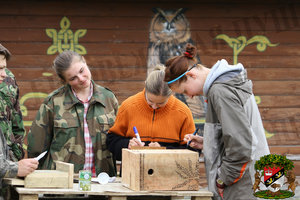 |
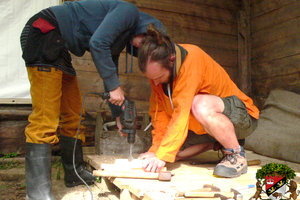 |
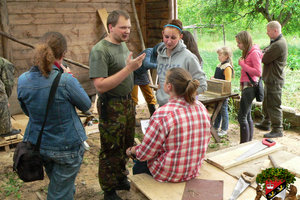 |
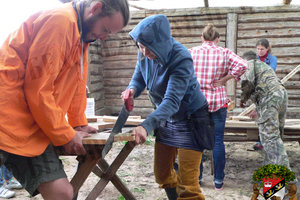 |
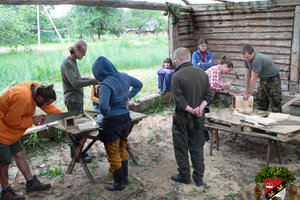 |
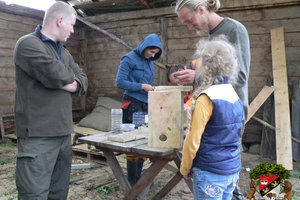 |
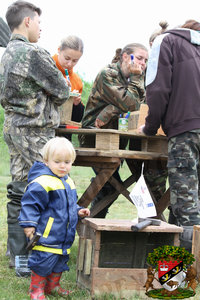 |
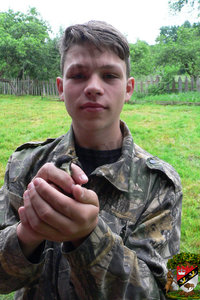 |
June 19, 2014
Website "INTEX-PRESS"
An elk calf is dead, when he was delivered to Belovezhskaya Pushcha
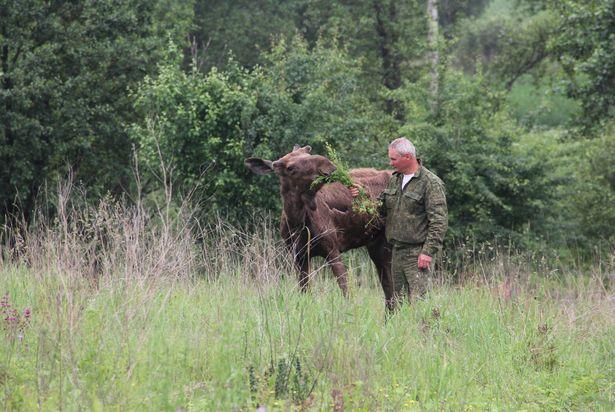
The elk calf became quite tame during his stay among people. Photo by Alexander Triputko.
Animal died when he was brought to the Reserve.
The reserve staff reported to the "IP" that the animal was brought to them in a deplorable state. In addition, the calf was as hungry as he did not depart from the trough during nearly two hours.
"When delivered to us, the small elk was very emaciated," leading researcher of the National Park "Belovezhskaya Pushcha" Alexei Bunevich said. "Besides, he had a broken leg - an abscess was on the joint. His wound was cleaned here and injection was made. We tried to save him, but failed.
Let's remind that Vladimir, a resident of the city of Baranovichy, picked an elk calf in a forest near the village of Kuntsevichi of the Baranovichi district a year ago. He has a seriously injured hoof. The man placed the animal in his dacha and tried to treat him as strong as he could. His friend Sasha helped treat the calf - regularly oiled the wounded hoof with ointment and gave an injection of antibiotics. This simple treatment was supplemented with easy feeding – besides grasses and branches excessive in the village, the owner of the calf fed him on goat's milk and forage. Vacationers fed the animal when Vladimir was away of home.
Locals have become very attached to the calf, named Yasha. He, as being constantly around people, has become quite tame - responded to the nickname and take food from the hands.
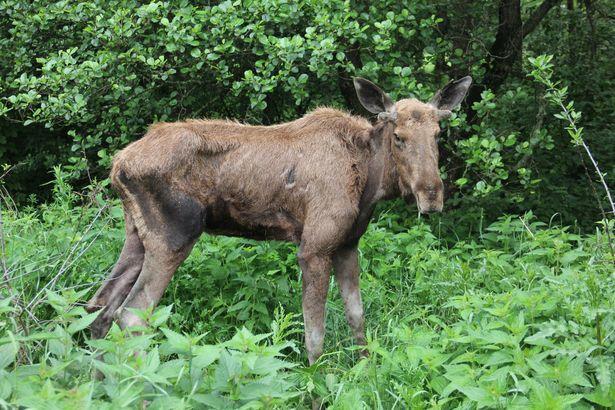
Yasha calf. Photo by Alexander Triputko.
Perhaps, the elk would have remained among the people as a normal pet, if not a passing driver by chance who saw this animal on a leash and called the Baranavichy Inter-district Inspectorate for Protection of Flora and Fauna.
………………
………………
When officers arrived at the place of inspection, they saw that the calf is very bad - the foot is still not healed. Because the leg hurt and caused discomfort to the animal, he moved a little, and eventually the other hoofs get deformed.
"At first glance, the citizen made a noble thing - he took a sick animal and gave him his first veterinary care," Igor Zagorski, Chief of the Baranovichi Inter-district Inspectorate for Protection of Flora and Fauna at the President of the Republic of Belarus, said to the "IP". However, the appearance of the calf was evidence that the animal is sick and he had insufficient vitamin. Elk cannot be feed usually as livestock, because he needs special food.
Release the calf into the woods was impossible because he'd just died. Inspection staff decided to deliver him to Belovezhskaya Pushcha. The National Park's staff gladly agreed to take the calf because the deficit of elk males in the Reserve. It was planned to keep Yasha in the zoo enclosures, under the supervision of specialists, and bring his food to the natural.
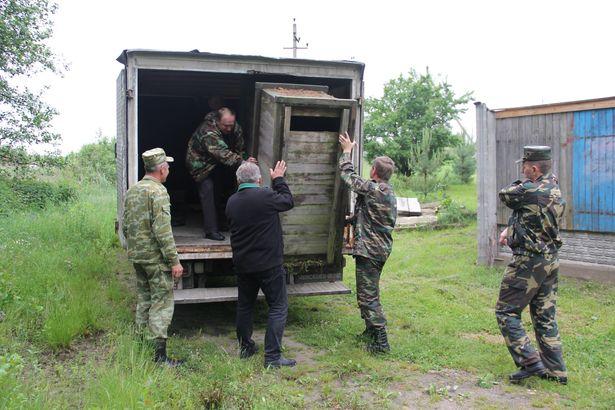
A transport vehicle for the calf to Belovezhskaya Pushcha. Photo by Alexander Triputko.
To load the calf in the car, a special operation was actually organized. A cage adapted for the carriage of red deer was small, as the calf has already grown under two meters tall. It had to build decking to raise the animal to the car body.
Vacationers, for whom Yasha became part of their life, were sadly watching for what was happening. Alexander, who along with the owner cared for elk Yasha, could only say with tears in his eyes "we fed, and now Yasha is taken away." The owner of the calf was so upset that refused to talk with reporters at all.
Vladimir, who first came to the aid of the animal and, as best he could, took care of him, face fines - up to 3 million rubles (~$ 300) for keeping a wild animal without the permission of the Ministry of Environment. That does not help regain the lost animal, but in this way, probably, is easy to help discourage to care for such animals.

The elk calf became quite tame during his stay among people. Photo by Alexander Triputko.
Animal died when he was brought to the Reserve.
The reserve staff reported to the "IP" that the animal was brought to them in a deplorable state. In addition, the calf was as hungry as he did not depart from the trough during nearly two hours.
"When delivered to us, the small elk was very emaciated," leading researcher of the National Park "Belovezhskaya Pushcha" Alexei Bunevich said. "Besides, he had a broken leg - an abscess was on the joint. His wound was cleaned here and injection was made. We tried to save him, but failed.
Let's remind that Vladimir, a resident of the city of Baranovichy, picked an elk calf in a forest near the village of Kuntsevichi of the Baranovichi district a year ago. He has a seriously injured hoof. The man placed the animal in his dacha and tried to treat him as strong as he could. His friend Sasha helped treat the calf - regularly oiled the wounded hoof with ointment and gave an injection of antibiotics. This simple treatment was supplemented with easy feeding – besides grasses and branches excessive in the village, the owner of the calf fed him on goat's milk and forage. Vacationers fed the animal when Vladimir was away of home.
Locals have become very attached to the calf, named Yasha. He, as being constantly around people, has become quite tame - responded to the nickname and take food from the hands.

Yasha calf. Photo by Alexander Triputko.
Perhaps, the elk would have remained among the people as a normal pet, if not a passing driver by chance who saw this animal on a leash and called the Baranavichy Inter-district Inspectorate for Protection of Flora and Fauna.
………………
………………
When officers arrived at the place of inspection, they saw that the calf is very bad - the foot is still not healed. Because the leg hurt and caused discomfort to the animal, he moved a little, and eventually the other hoofs get deformed.
"At first glance, the citizen made a noble thing - he took a sick animal and gave him his first veterinary care," Igor Zagorski, Chief of the Baranovichi Inter-district Inspectorate for Protection of Flora and Fauna at the President of the Republic of Belarus, said to the "IP". However, the appearance of the calf was evidence that the animal is sick and he had insufficient vitamin. Elk cannot be feed usually as livestock, because he needs special food.
Release the calf into the woods was impossible because he'd just died. Inspection staff decided to deliver him to Belovezhskaya Pushcha. The National Park's staff gladly agreed to take the calf because the deficit of elk males in the Reserve. It was planned to keep Yasha in the zoo enclosures, under the supervision of specialists, and bring his food to the natural.

A transport vehicle for the calf to Belovezhskaya Pushcha. Photo by Alexander Triputko.
To load the calf in the car, a special operation was actually organized. A cage adapted for the carriage of red deer was small, as the calf has already grown under two meters tall. It had to build decking to raise the animal to the car body.
Vacationers, for whom Yasha became part of their life, were sadly watching for what was happening. Alexander, who along with the owner cared for elk Yasha, could only say with tears in his eyes "we fed, and now Yasha is taken away." The owner of the calf was so upset that refused to talk with reporters at all.
Vladimir, who first came to the aid of the animal and, as best he could, took care of him, face fines - up to 3 million rubles (~$ 300) for keeping a wild animal without the permission of the Ministry of Environment. That does not help regain the lost animal, but in this way, probably, is easy to help discourage to care for such animals.
June 17, 2014
"Vecherniy Brest" (The Evening Brest) newspaper
Into a UNESCO List on the new criteria
Belovezhskaya Pushcha can be inscribed on a World Heritage Sites' List because of the new boundaries.
The 38th session of the World Heritage Committee, which will discuss 38 new candidates for inclusion in the List including the trans-boundary site "Bialowieza Forest", started in Doha, the Qatari capital.
The matter is about the new borders of the strictly protected core, which is already in the World Heritage List. 5,000 hectares of old-growth forest in the Polish part of the Forest was included in 1978 and the same area in the Belarusian side in 1992. Later, however, new criteria have been developed to be met by World Heritage and both national parks have been invited to prepare the new application based on these criteria. Both Polish and Belarusian sides worked hard to expand the strictly protected areas. In particular, the core zone of the Belarusian part of the Forest was almost doubled by presidential decree in 2012. Thus, it is expected that the area of the Bialowieza Forest, important for UNESCO, is to increase to 140,000 ha (60,000 ha on the Polish side and 80,000 on the Belarusian). "In any case the Forest remain in the World Heritage List, but we hope that it will be re-inscribed with the new criteria and new frontiers," the Deputy Director General of the National Park "Belovezhskaya Pushcha" for science Vasily Arnolbik says. Now the UNESCO's List includes four sites on the territory of Belarus. Besides the Forest, they are the Mir and Nesvizh castles and the Struve Geodetic Arc. 11 more objects, including Brest Fortress, pretend to be included into the List, but these candidates will not be considered during the session of the Committee in Qatar.
By Elena Tribuleva
Belovezhskaya Pushcha can be inscribed on a World Heritage Sites' List because of the new boundaries.
The 38th session of the World Heritage Committee, which will discuss 38 new candidates for inclusion in the List including the trans-boundary site "Bialowieza Forest", started in Doha, the Qatari capital.
The matter is about the new borders of the strictly protected core, which is already in the World Heritage List. 5,000 hectares of old-growth forest in the Polish part of the Forest was included in 1978 and the same area in the Belarusian side in 1992. Later, however, new criteria have been developed to be met by World Heritage and both national parks have been invited to prepare the new application based on these criteria. Both Polish and Belarusian sides worked hard to expand the strictly protected areas. In particular, the core zone of the Belarusian part of the Forest was almost doubled by presidential decree in 2012. Thus, it is expected that the area of the Bialowieza Forest, important for UNESCO, is to increase to 140,000 ha (60,000 ha on the Polish side and 80,000 on the Belarusian). "In any case the Forest remain in the World Heritage List, but we hope that it will be re-inscribed with the new criteria and new frontiers," the Deputy Director General of the National Park "Belovezhskaya Pushcha" for science Vasily Arnolbik says. Now the UNESCO's List includes four sites on the territory of Belarus. Besides the Forest, they are the Mir and Nesvizh castles and the Struve Geodetic Arc. 11 more objects, including Brest Fortress, pretend to be included into the List, but these candidates will not be considered during the session of the Committee in Qatar.
By Elena Tribuleva
June 16, 2014
Website "UN Radio"
Will "Bialowieza Forest" be further in the UNESCO's List of World Heritage Sites?

Photo by OON
Premer Minister of Qatar Abdullah bin Nasser bin Khalifa Al Thani has announced a donation of $ 10 million for a new initiative for the protection of World Heritage Sites from war conflicts and natural disasters. Representatives of Qatar also urged other countries to join this initiative and to allocate money for the new fund.
the 38th session of the World Heritage Committee has opened in the capital of Qatar, Doha. The meeting discusses more than three dozen of new candidates for inclusion in the World Heritage Sites' List. As one of the issues, delegates will decide whether there will be national parks "Belovezhskaya Pushcha" and "Bialowieza Forest in the List. They share the territory of Belarus and Poland.
The corridor Pendjikent-Samarkand-Poykent in Tajikistan and Uzbekistan, and route network Tien Shan of the corridor in Kyrgyzstan, Kazakhstan and China are also among the contenders for World Heritage status. Both corridors are part of the legendary Silk Road.

Photo by OON
the 38th session of the World Heritage Committee has opened in the capital of Qatar, Doha. The meeting discusses more than three dozen of new candidates for inclusion in the World Heritage Sites' List. As one of the issues, delegates will decide whether there will be national parks "Belovezhskaya Pushcha" and "Bialowieza Forest in the List. They share the territory of Belarus and Poland.
The corridor Pendjikent-Samarkand-Poykent in Tajikistan and Uzbekistan, and route network Tien Shan of the corridor in Kyrgyzstan, Kazakhstan and China are also among the contenders for World Heritage status. Both corridors are part of the legendary Silk Road.
June 13, 2014
Website "The National Park "Belovezhskaya Pushcha""
Trans-boundary Parks in harmony with nature
From 26 to 31 May 2014, the 7th meeting of the tripartite meeting "Trans-boundary Parks in harmony with nature" was held in Belovezhskaya Pushcha. It was attended by representatives of the administration and scientists from the National Park of the Lower Oder Valley (Germany), landscape parks of Western Pomerania and the Bialowieza National Park (Poland).
The main purpose of the meeting was to prepare the joint (Belarus-Poland-Germany) trilateral project, which will be stated for the financing from European Environmental Funds. In the ensuing discussion, there were provided suggestions for the project application, focused on innovative approaches to the management of especially protected areas and to the conservation of European biodiversity and ecosystems, which are present in all cross-border parks.
In addition, heads of national parks shared news about the most important events that have occurred since the last meeting on their protected areas. There were discussed the prospects for further cooperation, as well as the next stage of the program of Summer Academy for students of environmental specialties, which this year will be held in the Belarusian part of Belovezhskaya Pushcha.
From 26 to 31 May 2014, the 7th meeting of the tripartite meeting "Trans-boundary Parks in harmony with nature" was held in Belovezhskaya Pushcha. It was attended by representatives of the administration and scientists from the National Park of the Lower Oder Valley (Germany), landscape parks of Western Pomerania and the Bialowieza National Park (Poland).
The main purpose of the meeting was to prepare the joint (Belarus-Poland-Germany) trilateral project, which will be stated for the financing from European Environmental Funds. In the ensuing discussion, there were provided suggestions for the project application, focused on innovative approaches to the management of especially protected areas and to the conservation of European biodiversity and ecosystems, which are present in all cross-border parks.
In addition, heads of national parks shared news about the most important events that have occurred since the last meeting on their protected areas. There were discussed the prospects for further cooperation, as well as the next stage of the program of Summer Academy for students of environmental specialties, which this year will be held in the Belarusian part of Belovezhskaya Pushcha.
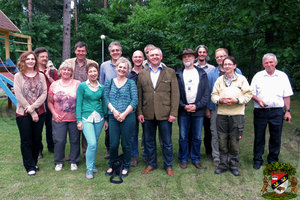 |
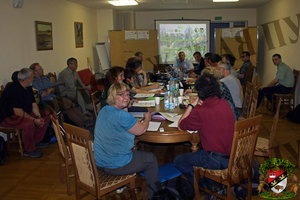 |
June 13, 2014
Website "The National Park "Belovezhskaya Pushcha""
Preparation of the Summer Academy is in progress
Within the framework of the trilateral project of international cooperation between cross-border protected areas of Germany, Poland and Belarus (the National Park "Lower Oder Valley", the National Park "Belovezhskaya Pushcha" and "Bialowieza National Park"), it is preparing in the area of Belovezhskaya Pushcha for the Summer Academy for undergraduate students from partner universities and these parks (Eberswalde Sustainable Development University - Faculty of Forestry and the Environment, Belarusian State Technological University - Faculty of Forestry and Bialystok Technical University - Faculty of Economic Management in Hajnowka.
On June 10 and11, a meeting of teachers from departments of taxation, forestry and forest protection at the Forestry Faculty of the BSTU (Minsk) with research staff of the National Park was organized, to discuss the program of the upcoming Summer Academy and to analyze facilities for research of students of the three countries. Subject of research includes the study of the ecology of flora and fauna in the old-growth forest ecosystems, forest monitoring to assess the dynamics of the process and the analysis of management strategies in especially protected natural areas. In addition, there are several socially relevant topics, the implementation of which will be based on a survey of local people living in the territory of protected areas and beyond, as well as stakeholders associated with the National park, including local authorities.
This is the second year of the project. In 2013, Summer Academy was held in the Bialowieza National Park (Poland). In 2015, this event will take place in Germany, in the National Park "Lower Oder Valley."
Within the framework of the trilateral project of international cooperation between cross-border protected areas of Germany, Poland and Belarus (the National Park "Lower Oder Valley", the National Park "Belovezhskaya Pushcha" and "Bialowieza National Park"), it is preparing in the area of Belovezhskaya Pushcha for the Summer Academy for undergraduate students from partner universities and these parks (Eberswalde Sustainable Development University - Faculty of Forestry and the Environment, Belarusian State Technological University - Faculty of Forestry and Bialystok Technical University - Faculty of Economic Management in Hajnowka.
On June 10 and11, a meeting of teachers from departments of taxation, forestry and forest protection at the Forestry Faculty of the BSTU (Minsk) with research staff of the National Park was organized, to discuss the program of the upcoming Summer Academy and to analyze facilities for research of students of the three countries. Subject of research includes the study of the ecology of flora and fauna in the old-growth forest ecosystems, forest monitoring to assess the dynamics of the process and the analysis of management strategies in especially protected natural areas. In addition, there are several socially relevant topics, the implementation of which will be based on a survey of local people living in the territory of protected areas and beyond, as well as stakeholders associated with the National park, including local authorities.
This is the second year of the project. In 2013, Summer Academy was held in the Bialowieza National Park (Poland). In 2015, this event will take place in Germany, in the National Park "Lower Oder Valley."
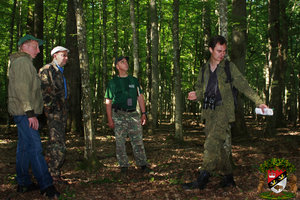 |
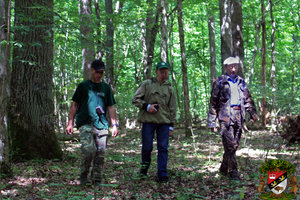 |
June 12, 2014
Website "The National Park "Belovezhskaya Pushcha""
Fodder making
To get animals of Belovezhskaya Pushcha felt full in the winter and to bring offspring after severe frosts, it must make every effort in summer to prepare various feeds and feeding grounds.
Seeding forage crops is over. In particular, that is 487 hectares of barley, 622 hectares of oats, 211 hectares of maize, 65 hectares of perennial grasses and 11 hectares of fodder beet. Since a stable sunny weather, active hay and silage harvesting began. Forage bundles' harvesting is also in progress, mostly of birch, poplar, willow, aspen and nettle.
To get animals of Belovezhskaya Pushcha felt full in the winter and to bring offspring after severe frosts, it must make every effort in summer to prepare various feeds and feeding grounds.
Seeding forage crops is over. In particular, that is 487 hectares of barley, 622 hectares of oats, 211 hectares of maize, 65 hectares of perennial grasses and 11 hectares of fodder beet. Since a stable sunny weather, active hay and silage harvesting began. Forage bundles' harvesting is also in progress, mostly of birch, poplar, willow, aspen and nettle.
June 10, 2014
Website "Interfax"
Biking trail will connect Belarus and Europe
European Cycling Federation is working on EuroVelo Project/ This is 15 cycling routes, laid on 43 countries. The territory of Belarus will serve the route from Ireland to Russia - EuroVelo-2, "Route of Capitals" - through Belovezhskaya Pushcha and Nalibokskaya Pushcha. NGO "Minsk Cycling Community" is developing this route.
 "This year we want to finalize the route. It begins in Belovezhskaya Pushcha at the border crossing "Pererov" and ends in the village of Lyady, Dubrovensky district. Part of the route has been investigated, another one is still in development," project coordinator Alexander Nahayko said.
"This year we want to finalize the route. It begins in Belovezhskaya Pushcha at the border crossing "Pererov" and ends in the village of Lyady, Dubrovensky district. Part of the route has been investigated, another one is still in development," project coordinator Alexander Nahayko said.
It is planned to start labeling of the bike route in 2015. Signs and guideboard will be installed at the entire length of the route. European Federation makes high demands on the roads of the route. At least 75% of them should be asphalted. A bike path should be located no further 40 km from railway stations. Cyclists should be able to go most of the way two by two.
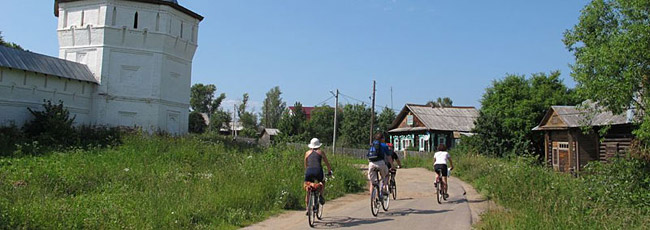 The common requirements are the next. "First and foremost is that the route is making for the Belarusians. But the foreigners will also have an excellent opportunity to see Belarus and its most beautiful places", Alexander Nakhayko says.
The common requirements are the next. "First and foremost is that the route is making for the Belarusians. But the foreigners will also have an excellent opportunity to see Belarus and its most beautiful places", Alexander Nakhayko says.
European Cycling Federation is working on EuroVelo Project/ This is 15 cycling routes, laid on 43 countries. The territory of Belarus will serve the route from Ireland to Russia - EuroVelo-2, "Route of Capitals" - through Belovezhskaya Pushcha and Nalibokskaya Pushcha. NGO "Minsk Cycling Community" is developing this route.

It is planned to start labeling of the bike route in 2015. Signs and guideboard will be installed at the entire length of the route. European Federation makes high demands on the roads of the route. At least 75% of them should be asphalted. A bike path should be located no further 40 km from railway stations. Cyclists should be able to go most of the way two by two.

June 10, 2014
Website "Ecology.md"
Bialowieza Forest - Nature Without Borders
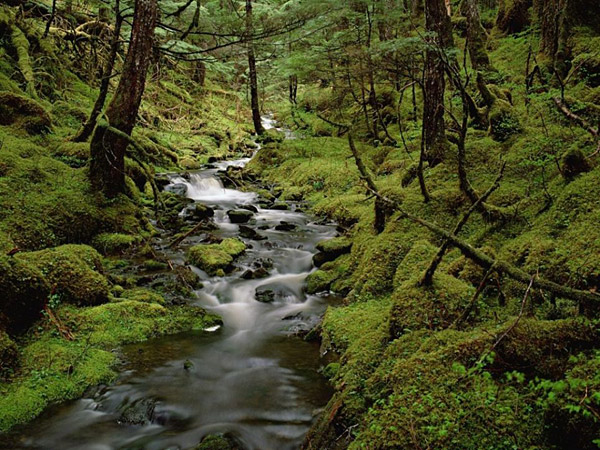
Photo by TOMIN.by
There are no boundaries for animals in the Bialowieza Forest, which stretches from north-eastern Poland to Belarus. Wild boars and wolves often appear on both sides of the border.
"Countries are separated by a solid fence, but the animals dig under it and easily cross the border," Karol Wojciechowski explains. He works in the Polish part of the Bialowieza National Park. Due to its unique biodiversity, the Park was declared a World Heritage Site.
Bialowieza Forest is the only place where there are a free live European bison, the largest land mammal in Europe, dubbed the king of the forest. At the entrance to the Bialowieza National Park is a wooden sculpture representing the giant head of bison.
"The locals have a special relationship with bison, which is a symbol of the Bialowieza Forest," sculptor Slawomir Dowbiz says.
Bialowieza Forest is famous for its diversity of habitats and species which are rare or endangered in Europe. Among the typical landscape elements, there are a huge number of uprooted dead trees which became a habitat for many species of insects.
Every season in the Bialowieza Forest is special. In early spring, visitors can hear singing of birds and a concert of frogs trying to impress potential partners in the mating season. The forest is famous for birds living in it, such as three-toed woodpecker, white-backed woodpecker, and various species of owls.
The European Union plays a key role in preserving this diversity of nature. The Bialowieza National Park is part of the scheme of the EU Natura 2000, which seeks to protect the most valuable European species and their habitats. The Park also gets money to protect animals from the Regional Development Fund. Thanks to EU funds, bison live in a semi-reserve. They can be watched online via webcam.
Academy of forest biodiversity of the Bialowieza Forest organizes seminars, funded by the Programme for Regional Development. The main goal of the workshops is that people have learned to better understand the nature and explore the biodiversity of the Reserve.
"We are open to all nature lovers - families, children and professionals," Olimpia Pabian, coordinator of the Academy, says. Workshop participants come from Poland and other European countries.
Tourism in the area is also funded by the EU, through the Neighbourhood Programme Poland-Belarus-Ukraine.

Photo by TOMIN.by
There are no boundaries for animals in the Bialowieza Forest, which stretches from north-eastern Poland to Belarus. Wild boars and wolves often appear on both sides of the border.
"Countries are separated by a solid fence, but the animals dig under it and easily cross the border," Karol Wojciechowski explains. He works in the Polish part of the Bialowieza National Park. Due to its unique biodiversity, the Park was declared a World Heritage Site.
Bialowieza Forest is the only place where there are a free live European bison, the largest land mammal in Europe, dubbed the king of the forest. At the entrance to the Bialowieza National Park is a wooden sculpture representing the giant head of bison.
"The locals have a special relationship with bison, which is a symbol of the Bialowieza Forest," sculptor Slawomir Dowbiz says.
Bialowieza Forest is famous for its diversity of habitats and species which are rare or endangered in Europe. Among the typical landscape elements, there are a huge number of uprooted dead trees which became a habitat for many species of insects.
Every season in the Bialowieza Forest is special. In early spring, visitors can hear singing of birds and a concert of frogs trying to impress potential partners in the mating season. The forest is famous for birds living in it, such as three-toed woodpecker, white-backed woodpecker, and various species of owls.
The European Union plays a key role in preserving this diversity of nature. The Bialowieza National Park is part of the scheme of the EU Natura 2000, which seeks to protect the most valuable European species and their habitats. The Park also gets money to protect animals from the Regional Development Fund. Thanks to EU funds, bison live in a semi-reserve. They can be watched online via webcam.
Academy of forest biodiversity of the Bialowieza Forest organizes seminars, funded by the Programme for Regional Development. The main goal of the workshops is that people have learned to better understand the nature and explore the biodiversity of the Reserve.
"We are open to all nature lovers - families, children and professionals," Olimpia Pabian, coordinator of the Academy, says. Workshop participants come from Poland and other European countries.
Tourism in the area is also funded by the EU, through the Neighbourhood Programme Poland-Belarus-Ukraine.
June 10, 2014
Website "The National Park "Belovezhskaya Pushcha""
A good result
 There are results of the republican contest "Best Exporter of the Year", which was held by the Belarusian Chamber of Commerce together with the concerned central government bodies, regional executive committees, the Minsk City Executive Committee, the National Academy of Sciences of Belarus, the State Establishment "High Tech Park Administration" and other public organizations.
There are results of the republican contest "Best Exporter of the Year", which was held by the Belarusian Chamber of Commerce together with the concerned central government bodies, regional executive committees, the Minsk City Executive Committee, the National Academy of Sciences of Belarus, the State Establishment "High Tech Park Administration" and other public organizations.
The purpose of the contest was to identify and encourage businesses and entrepreneurs producing goods and providing services that have achieved the highest scores in the export sector, and stimulating the development of export-oriented production and promotion of the prestige of Belarusian producers in the world market.
The National Park "Belovezhskaya Pushcha" also participated in this competition, in the category of "Services". According to the results of the contest, the National Park "Belovezhskaya Pushcha" was awarded an incentive Diploma of the republican contest "Best Exporter of the Year."

The purpose of the contest was to identify and encourage businesses and entrepreneurs producing goods and providing services that have achieved the highest scores in the export sector, and stimulating the development of export-oriented production and promotion of the prestige of Belarusian producers in the world market.
The National Park "Belovezhskaya Pushcha" also participated in this competition, in the category of "Services". According to the results of the contest, the National Park "Belovezhskaya Pushcha" was awarded an incentive Diploma of the republican contest "Best Exporter of the Year."
June 09, 2014
Website "FreeSMI.by"
the number of the bitten by ticks in Brest region increased by 4 times compared to last year

The number of people in Brest region affected by tick bites has increased for 4 months from the beginning of this year almost four-fold compared with the same period last year. That's information from BelTA referring to the statement by Nelly Gindyuk, the Chief Physician of the Regional Center of Hygiene, Epidemiology and Public Health.
During the period from January to April of 2014, 345 people were bitten by ticks, including 137 children. Last year, the number of victims from January to April was still 87 people, including 30 children. As it learned from the result of laboratory studies, about half of ticks were infected with Lyme borreliosis agents.
Within four months of this year, the incidence of Lyme borreliosis was 1.03 cases per 100,000 people. This equals the previous year. Cases of the disease of encephalitis in the first four months of 2014 have not been identified. With regard to annual figures, the average is about 30 people in each year infected with encephalitis, and about 85 cases of Lyme borreliosis is recorded.
5 districts of Brest region lead in terms of virus encephalitis. These are Pruzhany, Bereza, Ivacevicy, Kamenetsk and Malorita districts. About 97.6% of the cases of this disease are in these areas. Rural residents are mostly infected (about 65.6% of total cases).
According to entomological monitoring, which was organized by specialists from Pruzhany and Kamenetz districts, it was found a large number of ticks on the territory of Belovezhskaya Pushcha. These ticks have been found in the areas of car parking, zoo enclosures, the Residence of Santa Claus and other recreation sites.
As Nelly Gindyuk noted, to catch ticks is possible not only in the forest, but also on farmlands and urban areas, in the forest parks of towns, recreation centers and sanatoriums. As for Brest, the residents of the regional center can meet ticks on the territory of the Red Court, in the Park of Soldiers-Internationalists and the Brest Fortress, and in a forested area near the Regional Hospital.

The number of people in Brest region affected by tick bites has increased for 4 months from the beginning of this year almost four-fold compared with the same period last year. That's information from BelTA referring to the statement by Nelly Gindyuk, the Chief Physician of the Regional Center of Hygiene, Epidemiology and Public Health.
During the period from January to April of 2014, 345 people were bitten by ticks, including 137 children. Last year, the number of victims from January to April was still 87 people, including 30 children. As it learned from the result of laboratory studies, about half of ticks were infected with Lyme borreliosis agents.
Within four months of this year, the incidence of Lyme borreliosis was 1.03 cases per 100,000 people. This equals the previous year. Cases of the disease of encephalitis in the first four months of 2014 have not been identified. With regard to annual figures, the average is about 30 people in each year infected with encephalitis, and about 85 cases of Lyme borreliosis is recorded.
5 districts of Brest region lead in terms of virus encephalitis. These are Pruzhany, Bereza, Ivacevicy, Kamenetsk and Malorita districts. About 97.6% of the cases of this disease are in these areas. Rural residents are mostly infected (about 65.6% of total cases).
According to entomological monitoring, which was organized by specialists from Pruzhany and Kamenetz districts, it was found a large number of ticks on the territory of Belovezhskaya Pushcha. These ticks have been found in the areas of car parking, zoo enclosures, the Residence of Santa Claus and other recreation sites.
As Nelly Gindyuk noted, to catch ticks is possible not only in the forest, but also on farmlands and urban areas, in the forest parks of towns, recreation centers and sanatoriums. As for Brest, the residents of the regional center can meet ticks on the territory of the Red Court, in the Park of Soldiers-Internationalists and the Brest Fortress, and in a forested area near the Regional Hospital.
June 09, 2014
Website "IMA-PRESS"
The number of bison in Belarus has increased by more than 3 times over the past 20 years
 The number of bison in Belarus has increased by more than 3 times over the past 20 years, as Deputy Minister of Natural Resources and Environmental Protection of Belarus Iya Malkina told journalists during the video conference "Minsk - Moscow - Astana", as BelTA has learned.
The number of bison in Belarus has increased by more than 3 times over the past 20 years, as Deputy Minister of Natural Resources and Environmental Protection of Belarus Iya Malkina told journalists during the video conference "Minsk - Moscow - Astana", as BelTA has learned.
According to Iya Malkina, now in the territory of the Bialowieza Forest are 1,134 of this animal. "Now we can rightfully say that bison is our national treasure," she said.
Iya Malkina also noted that bison is an animal that lives in the wild and it cannot by in captivity. In terms of cross-border cooperation, it is necessary to take into account the location of the Bialowieza Forest in the two countries - Poland and Belarus. "We need to conclude agreements that will allow for free contact and genetic exchange between the various groups of Bialowieza bison," First Deputy Minister added.

According to Iya Malkina, now in the territory of the Bialowieza Forest are 1,134 of this animal. "Now we can rightfully say that bison is our national treasure," she said.
Iya Malkina also noted that bison is an animal that lives in the wild and it cannot by in captivity. In terms of cross-border cooperation, it is necessary to take into account the location of the Bialowieza Forest in the two countries - Poland and Belarus. "We need to conclude agreements that will allow for free contact and genetic exchange between the various groups of Bialowieza bison," First Deputy Minister added.
June 06, 2014
"Grodnenskaya Pravda" (The Grodno Truth) newspaper
An open air of artists was in Belovezhskaya Pushcha
 The first regional open air-competition for young artists "Symphony of Grandeur of Nature of Belovezhskaya Pushcha was in the district center.
The first regional open air-competition for young artists "Symphony of Grandeur of Nature of Belovezhskaya Pushcha was in the district center.
It was attended by 30 young artists from children's art schools of the towns of Svisloch, Novogrudok, Berestovitsa, Schuchin, Zheludok and Krasnosel'skiy.
But before taking up the brush, the guys got to know the Svisloch area, visited the local historical museum, saw the film "Sv³sloch is Treasure of Education" and, of course, visited Belovezhskaya Pushcha. They expressed their impressions of the visit to the green pearl of Europe in the pictures. On the second day of the competition, young artists painted on a free theme in the old Svisloch park.
Competent jury composed of members of the Union of Artists of the Republic of Belarus and teachers of the Grodno State College of Arts identified best artists. In the older age group, they were Bogdan Eysmont from Svisloch and Maria Dukhovnik from Novogrudok. In the younger age group, that was Polina Deshuk from Novogrudok.
By Galina Romanchuk

It was attended by 30 young artists from children's art schools of the towns of Svisloch, Novogrudok, Berestovitsa, Schuchin, Zheludok and Krasnosel'skiy.
But before taking up the brush, the guys got to know the Svisloch area, visited the local historical museum, saw the film "Sv³sloch is Treasure of Education" and, of course, visited Belovezhskaya Pushcha. They expressed their impressions of the visit to the green pearl of Europe in the pictures. On the second day of the competition, young artists painted on a free theme in the old Svisloch park.
Competent jury composed of members of the Union of Artists of the Republic of Belarus and teachers of the Grodno State College of Arts identified best artists. In the older age group, they were Bogdan Eysmont from Svisloch and Maria Dukhovnik from Novogrudok. In the younger age group, that was Polina Deshuk from Novogrudok.
By Galina Romanchuk
June 06, 2014
Website "TUT.BY"
An elk calf tamed by a Baranavichy vacationers was sent to Belovezhskaya Pushcha
During about a year a resident from the city of Baranovichy nursed an elk calf, which he picked up in a forest, as Intex-press writes. But his noble deed was not appreciated by employees of the Baranovichi Inter-district Inspectorate for Protection of Flora and Fauna at the President of Belarus. On June 5, they confiscated the animals that are in poor condition, and sent him to Belovezhskaya Pushcha.

Photo by Alexander Triputko
………………
The owner will be punished for illegal keeping of wildlife.
………………
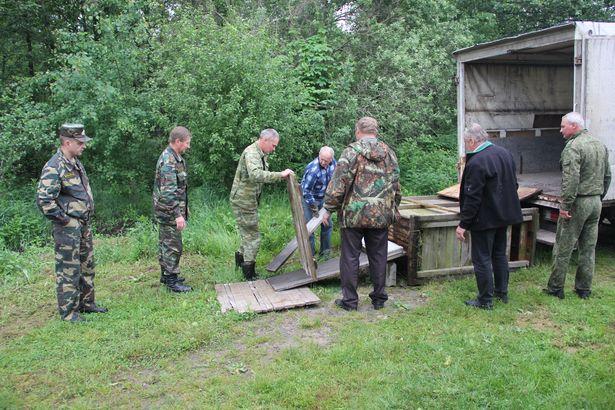
Trying to build a deck to go the animal in the car. Photo by Alexander Triputko.

Photo by Alexander Triputko.

During the stay among people, the calf became quite tame. Photo by Alexander Triputko.

The calf called Yasha. Photo by Alexander Triputko.

The calf was fed goat's milk and forage. Photo by Alexander Triputko.

Yasha resists and does not want to go to Belovezhskaya Pushcha. Photo by Alexander Triputko.

The calf calmly fed directly from hands. Photo by Alexander Triputko.

Farewell walk in the holiday village. Photo by Alexander Triputko.

A transport vehicle for the calf to Belovezhskaya Pushcha. Photo by Alexander Triputko.
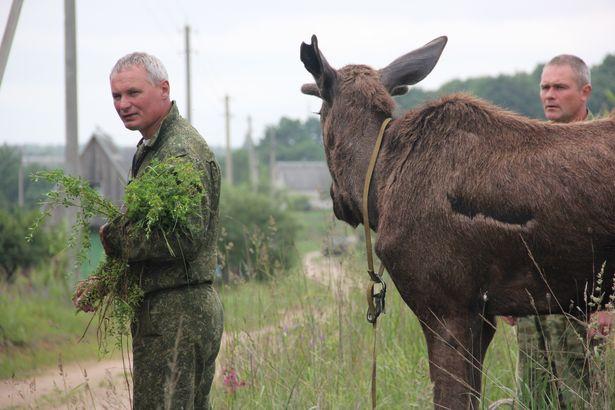
Photo by Alexander Triputko.

Transportation of Yasha. Photo by Alexander Triputko.
Tatiana Nekrashevich. Photo by Alexander Triputko
During about a year a resident from the city of Baranovichy nursed an elk calf, which he picked up in a forest, as Intex-press writes. But his noble deed was not appreciated by employees of the Baranovichi Inter-district Inspectorate for Protection of Flora and Fauna at the President of Belarus. On June 5, they confiscated the animals that are in poor condition, and sent him to Belovezhskaya Pushcha.

Photo by Alexander Triputko
………………
The owner will be punished for illegal keeping of wildlife.
………………

Trying to build a deck to go the animal in the car. Photo by Alexander Triputko.

Photo by Alexander Triputko.

During the stay among people, the calf became quite tame. Photo by Alexander Triputko.

The calf called Yasha. Photo by Alexander Triputko.

The calf was fed goat's milk and forage. Photo by Alexander Triputko.

Yasha resists and does not want to go to Belovezhskaya Pushcha. Photo by Alexander Triputko.

The calf calmly fed directly from hands. Photo by Alexander Triputko.

Farewell walk in the holiday village. Photo by Alexander Triputko.

A transport vehicle for the calf to Belovezhskaya Pushcha. Photo by Alexander Triputko.

Photo by Alexander Triputko.

Transportation of Yasha. Photo by Alexander Triputko.
Tatiana Nekrashevich. Photo by Alexander Triputko
June 03, 2014
Website "The National Park "Belovezhskaya Pushcha""
Belovezhskaya Pushcha is becoming an international permanent establishment for the study of bats
Bats are one of the least studied groups of mammals in our country. Despite the fact that Bialowieza Forest is historically one of the most long-term permanent establishments in Belarus, many aspects of the ecology of bats in old-growth forests are still poorly understood.
International scientific cooperation and the promotion of the territory as an international permanent establishment for collaborative research is an important direction of the development of scientific investigations in Belovezhskaya Pushcha. Therefore, one of such joint activities, that will be implemented on the basis of the National Park and will be starting in this field season, will be the study of the structure of communities and ecology of bats in old-growth forests of Belovezhskaya Pushcha. This work will be carried out by a postgraduate student, a grant holder of the Maud Erasmus's German Foundation on Support to Research under the supervision of the Institute of Animal Ecology (Germany).
Simultaneously with this study, Frankfurt Zoological Society allocated two scholarships for student-run diploma / master works for Belarusian students. Student scholarships support the implementation of research on bats in Belovezhskaya Pushcha and joint Belarusian-German scientific management helps integrate student research into an international context.
Holders of scholarships were Anna Gedroyt, student of the Grodno State University (under supervision by Olga Yanchurevich,) and Artem Zenkevich, student of the Belarusian State University (under supervision by Alexei Shpak).
Student scholarships were awarded within the framework of the joint research program in the field of nature conservation, implemented by the National Park "Belovezhskaya Pushcha" and NGO "APB-BirdLife Belarus" and supported by the Frankfurt Zoological Society.
Bats are one of the least studied groups of mammals in our country. Despite the fact that Bialowieza Forest is historically one of the most long-term permanent establishments in Belarus, many aspects of the ecology of bats in old-growth forests are still poorly understood.
International scientific cooperation and the promotion of the territory as an international permanent establishment for collaborative research is an important direction of the development of scientific investigations in Belovezhskaya Pushcha. Therefore, one of such joint activities, that will be implemented on the basis of the National Park and will be starting in this field season, will be the study of the structure of communities and ecology of bats in old-growth forests of Belovezhskaya Pushcha. This work will be carried out by a postgraduate student, a grant holder of the Maud Erasmus's German Foundation on Support to Research under the supervision of the Institute of Animal Ecology (Germany).
Simultaneously with this study, Frankfurt Zoological Society allocated two scholarships for student-run diploma / master works for Belarusian students. Student scholarships support the implementation of research on bats in Belovezhskaya Pushcha and joint Belarusian-German scientific management helps integrate student research into an international context.
Holders of scholarships were Anna Gedroyt, student of the Grodno State University (under supervision by Olga Yanchurevich,) and Artem Zenkevich, student of the Belarusian State University (under supervision by Alexei Shpak).
Student scholarships were awarded within the framework of the joint research program in the field of nature conservation, implemented by the National Park "Belovezhskaya Pushcha" and NGO "APB-BirdLife Belarus" and supported by the Frankfurt Zoological Society.
June 03, 2014
Website "TUT.BY"
Resident from Baranovichy rescued a baby elk. Now the city dweller faces fines and the elk called Yashka will be delivered to Belovezhskaya Pushcha
A tenderhearted driver passing by country cottages, located near the village of Kuntsevichi of the Baranovichi district, saw an elk grazing on a leash. Without hesitation, he called environmental inspectors.
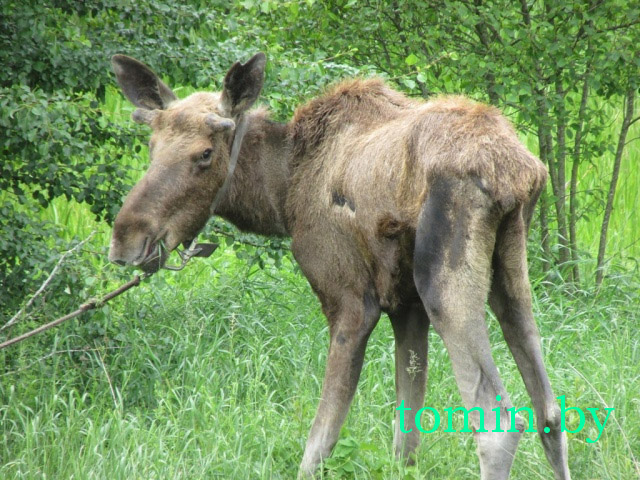

Employees of the Baranovichi Inter-district Inspectorate for Protection of Flora and Fauna went to the scene. It turned out there that a resident of the city of Baranovichi found a little elk calf in a forest in autumn last year. The animal had a serious leg injury.
The man took the animal to his dacha. The calf was given the nickname Yasha.


Neighbors helped foster the animal. They fed and looked after the baby when the owner was out.


"Administrative fine threaten to the resident of Baranovichy. According to the Belarusian legislation, it must have permission of the Ministri of Nature Protection to keep the animal," the inspector of the Baranovichi Inter-district Inspectorate of Protection of Flora and Fauna Oleg Slizyuk said to TOMIN.BY.


Now the calf is one year old. He cut the horn. Yasha become quite tame.
"Many people came here to be photographed with the elk. Kids go in a crowd. This is our local celebrity. Everyone loves him. it's a pity it he would be taken away", summer residents complain.
"In the coming days the calf will be taken away to the National Park "Belovezhskaya Pushcha". He will receive qualified veterinary care there," Oleg Slizyuk said.

Well, what is about the owner? He faces a fine - up to 20 base units.
However, summer residents hope that the Chief of the Baranovichi Inter-district Inspectorate for Protection of Flora and Fauna Igor Zagorski, considering the circumstances, will not prescribe more than three base units.
By Tamara Tiborovskaya. Photo by the Baranovichi Inter-district Inspectorate
A tenderhearted driver passing by country cottages, located near the village of Kuntsevichi of the Baranovichi district, saw an elk grazing on a leash. Without hesitation, he called environmental inspectors.


Employees of the Baranovichi Inter-district Inspectorate for Protection of Flora and Fauna went to the scene. It turned out there that a resident of the city of Baranovichi found a little elk calf in a forest in autumn last year. The animal had a serious leg injury.
The man took the animal to his dacha. The calf was given the nickname Yasha.


Neighbors helped foster the animal. They fed and looked after the baby when the owner was out.


"Administrative fine threaten to the resident of Baranovichy. According to the Belarusian legislation, it must have permission of the Ministri of Nature Protection to keep the animal," the inspector of the Baranovichi Inter-district Inspectorate of Protection of Flora and Fauna Oleg Slizyuk said to TOMIN.BY.


Now the calf is one year old. He cut the horn. Yasha become quite tame.
"Many people came here to be photographed with the elk. Kids go in a crowd. This is our local celebrity. Everyone loves him. it's a pity it he would be taken away", summer residents complain.
"In the coming days the calf will be taken away to the National Park "Belovezhskaya Pushcha". He will receive qualified veterinary care there," Oleg Slizyuk said.

Well, what is about the owner? He faces a fine - up to 20 base units.
However, summer residents hope that the Chief of the Baranovichi Inter-district Inspectorate for Protection of Flora and Fauna Igor Zagorski, considering the circumstances, will not prescribe more than three base units.
By Tamara Tiborovskaya. Photo by the Baranovichi Inter-district Inspectorate
June 02, 2014
Website "The National Park "Belovezhskaya Pushcha""
The first walking tour
School year is over. To mark this occasion, students of the second class of the Kamenyuki high school made their first walking tour. With the participation of employees from the Tourism and Scientific departments of the National Park "Belovezhskaya Pushcha", students went on paths in the protected area, met with the flora and fauna of the Bialowieza Forest and heard interesting stories about the nature and history of the ancient forest.
School year is over. To mark this occasion, students of the second class of the Kamenyuki high school made their first walking tour. With the participation of employees from the Tourism and Scientific departments of the National Park "Belovezhskaya Pushcha", students went on paths in the protected area, met with the flora and fauna of the Bialowieza Forest and heard interesting stories about the nature and history of the ancient forest.
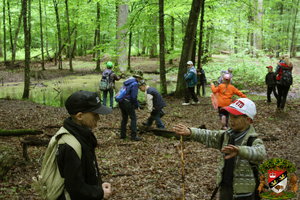 |
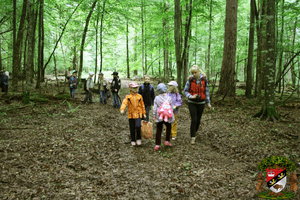 |
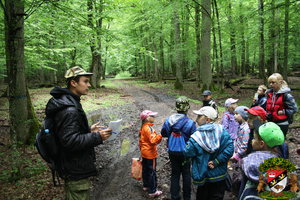 |